How to write about Antarctica?
For weeks after the end of this trip, I thought a lot about it.
How to describe a place so beautiful and so wild?
How to convey the feeling of being in front of one of the most dramatic exhibitions of nature? The feeling that you’re nothing at all, and that you’re there only because Antarctica allows you to be there.
It just can’t be done.
So I decided to describe it in a more objective and informative way. Even because it may be the best way to those who are looking for this kind of adventure.
I structured this post in 3 main parts – click the links below to go directly to each section:
1. What is a trip to Antarctica like?
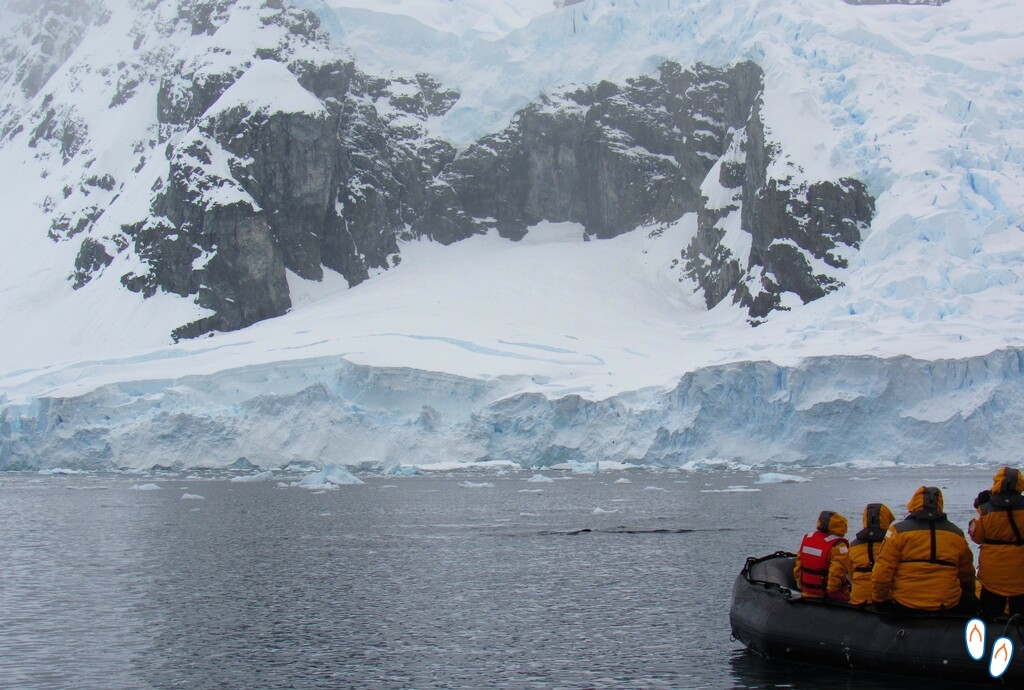 Group in a zodiac cruise in Paradise Harbour watching a humpback whale move in the water
Group in a zodiac cruise in Paradise Harbour watching a humpback whale move in the water
Tourism trips to Antarctica are mostly on cruise ships. Currently there are several companies offering trips to Antarctica. The trip usually are 9-20 days long, depending on the itinerary – some include Falkland Islands and South Georgia Islands.
Most cruises heading to Antarctica come from Ushuaia. A straight route from Ushuaia to Antarctica takes about 2 days. Travel time may vary according to the waves and the wind. The trip can be very uncomfortable depending on the conditions of the Drake Passage.
It is important to state that a trip to Antarctica is an expedition. This means that all logistics are defined during the trip, and are subject to several changes, according to the weather conditions. The landing points are defined only a few days earlier. This makes every trip to Antarctica a different experience.
Which is the best company travelling to Antarctica?
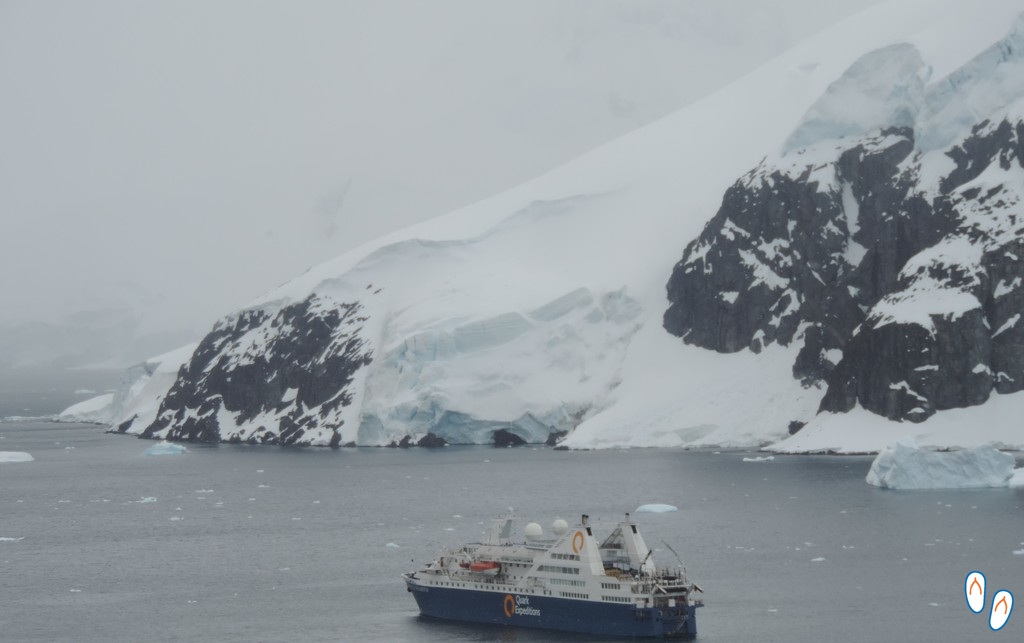 Quark Expeditions ship anchored in Paradise Harbor, Antarctica
Quark Expeditions ship anchored in Paradise Harbor, Antarctica
We chose to travel with Quark Expeditions, one of the most renowned companies operating in the polar regions. As this was our first experience cruising to one of the poles, we can not say whether or not it is better than the others. But based on our experience on this trip, we recommend Quark 100%.
Quark has been active in this market since 1991, and has an excellent expedition team. We have absolutely no complaints. From facilities on the ship, comfort and safety, to activities and communication, everything was perfect! As I stated before, I can not compare it with other companies. But in some situations like those where the landings were more challenging, I always felt safe and happy to have chosen Quark.
How to Choose your Cruise to Antarctica
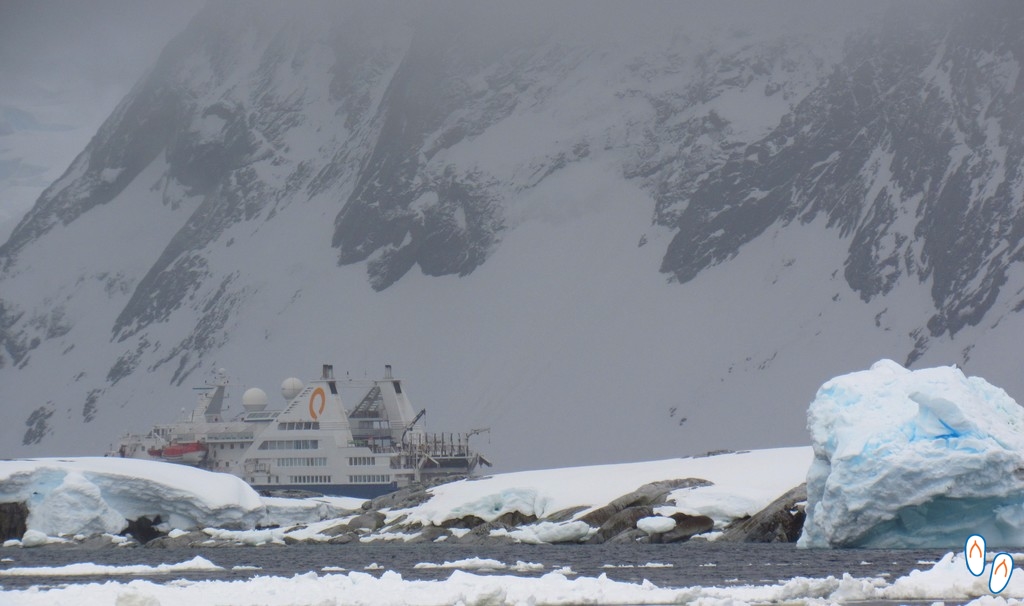 Our ship next to the gigantic Antarctic mountains, near Peterman Island
Our ship next to the gigantic Antarctic mountains, near Peterman Island
There are many cruise options for Antarctica. Some things that are important to take into consideration when choosing your trip:
- The company: study the reputation of the company operating the trip. Look for reviews of those who have traveled with this company to understand how it works. Tripadvisor has some interesting forums regarding traveling to Antarctica.
- I strongly suggest avoiding Chinese charters (unless you are chinese). Apart from the main language on the ship being Mandarin, all the food and the tourism culture are very different as well. Before booking your trip, confirm with your travel agent if it’s not a ‘chinese charter’.
- Avoid cruises with a large number of passengers. In Antarctica, there is a max. limit of 100 people on land at a time. For this reason, the greater the number of passengers, the shorter the time you’ll have in land.
- Check what is included in the trip, what needs to be paid separately and what are the basic requirements for your embarkation. In our case we had to pay a separate insurance that costed us $70 per person. At the end of the trip, we took the parka (waterproof jacket) home.
- Find out about the cruise ship and try to understand if the level of comfort and service meets your expectations. Some ships are more luxurious, others are simpler. Also remember that not always the largest ships are the most stable in navegation.
What is the best month to go to Antarctica?
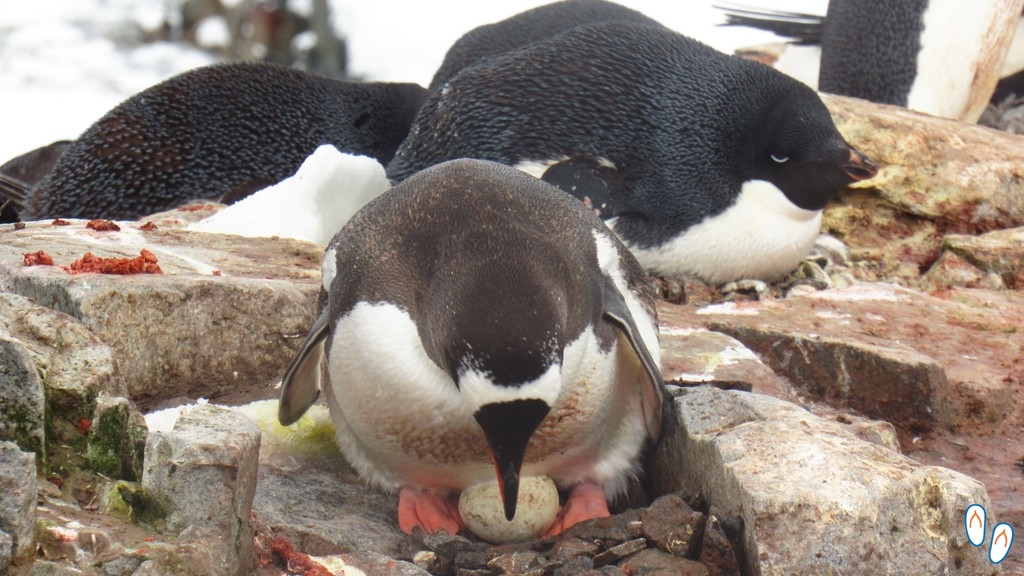 Gentoo penguin with egg in Peterman Island, Antarctica
Gentoo penguin with egg in Peterman Island, Antarctica
Antartica trips are usually offered from October to March. Each month provides a different experience in the continent. In October and November, penguins return to shore and there is plenty of wildlife, including many species of seals and birds. December is the month that the penguins find their mate and lay their eggs. January and February are the best months to see penguin chicks. March is a great time for whale watching.
But… is it too cold?
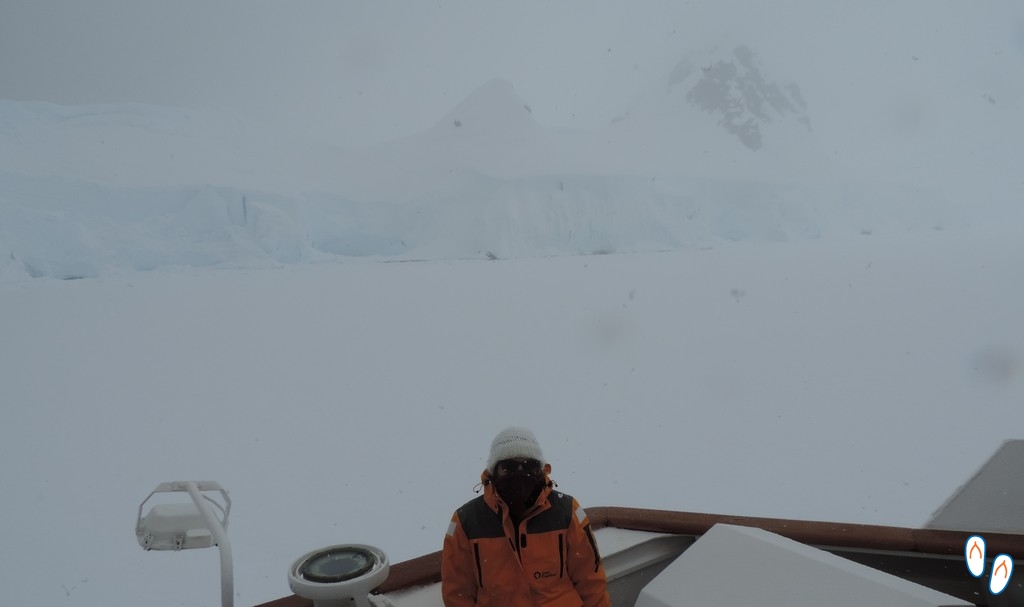 Getting cold in Whilhemina Bay, Antarctica
Getting cold in Whilhemina Bay, Antarctica
This is a very recurrent question regarding travel to Antarctica. Amazingly, we did not get too cold. The tourism trips to Antarctica are all during the summer, and most to the Antarctic Peninsula, where latitude is not as high.
We traveled in the middle of December and the average temperature was -2ºC. The day is very long, although the sky was constantly cloudy. It usually felt cold mostly because of the wind. But still, nothing unbearable. The important thing is to be well equipped with the right clothes.
What clothes to wear in Antarctica?
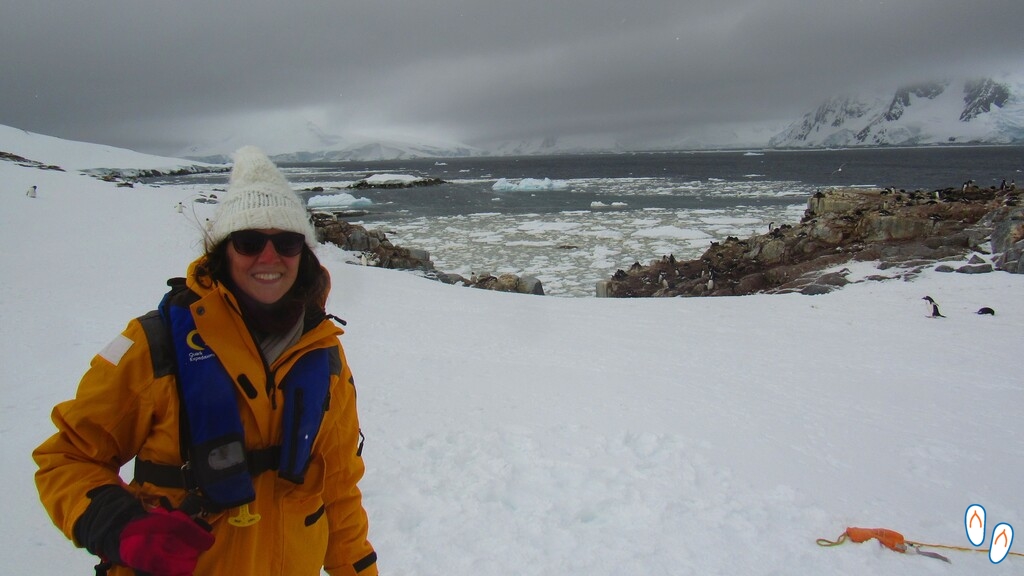 Wearing full landing gear on Peterman Island, Antarctica
Wearing full landing gear on Peterman Island, Antarctica
Quark grants the ‘parkas’ – a thick waterproof coat – and lends you waterproof boots. So basically all you need to worry about is wearing a waterproof pants and some warm layers. Our recommendation of what to wear:
- 2 layers of pants – a warm one and a waterproof one – note: the pants on top have to be waterproof and not only water resistant – the company can prevent you from participating in activities if you are not in the right clothes;
- 1 top baselayer – a breathable fabric blouse that warms;
- 1 warm layer – usually a fleece blouse, or wool;
- 2 layers of socks – at least one of them must be very warm;
- 1 cap;
- very warm gloves – the ideal is a thinner one underneath that gives you greater flexibility and another one over warmer and impermeable;
- sunglasses – very important, it protects from the sun and also from the rain and snow – in the zodiac they make a huge difference;
- a scarf to protect your face and neck;
- a waterproof backpack – important to take camera and other equipment that you want to take to landings – note: you will need both hands free when disembarking the ship;
- Also, be sure to bring sunscreen and moisturizer to the skin and lips.
In Ushuaia, there are several stores selling clothes for snow and cold weather. On contrary to what I expected, prices are not exorbitant – and that is because there is VAT exemption in Ushuaia. In addition, being out of season (summer), we were fortunate to find a store with 60% discount throughout the winter collection.
On Quark’s ship there was also a store that sells clothing appropriate for the activities. But not surprisingly it is much more expensive. We were happy to have bought what we needed in Ushuaia and did not have to buy anything on the ship.
What language is sponken on the ship?
All communication within the ship is in English. In our case, because of an above-normal amount of Chinese on the ship, there was also communication in Mandarin. But do not expect translation for all languages of all passangers . To take this trip, it is imperative that you or someone in your party understands English.
The trip to Antarctica is an expedition, so many of the directions and orientations will be given at the time of each activity. There is no way to anticipate it. But I was glad to see that all major communication was made very clearly and slowly, making it easier to understand for those who do not have English as their native language.
How it is to walk in Antarctica?
 The massive glaciers of Paradise Harbor, Antarctica
The massive glaciers of Paradise Harbor, Antarctica
Walking in Antarctica was unlike anything we’ve ever done. Sometimes it seems like you are walking on a glacier, but the thick layer of snow is much softer than ice. Most of the time, I used trekking sticks (available by Quark) to keep from slipping.
On any landing, Quark’s expedition team makes the first walk before all groups, to inspect and “prepare” the terrain. When the first zodiacs with passengers arrive on land, there is already a path that must be followed for their own safety.
Each group that arrives will have a ground time, to be notified on the landing of the zodiac. Each one is responsible for controlling one’s own time and returning to the starting point at the combined time.
Face to face with the penguins
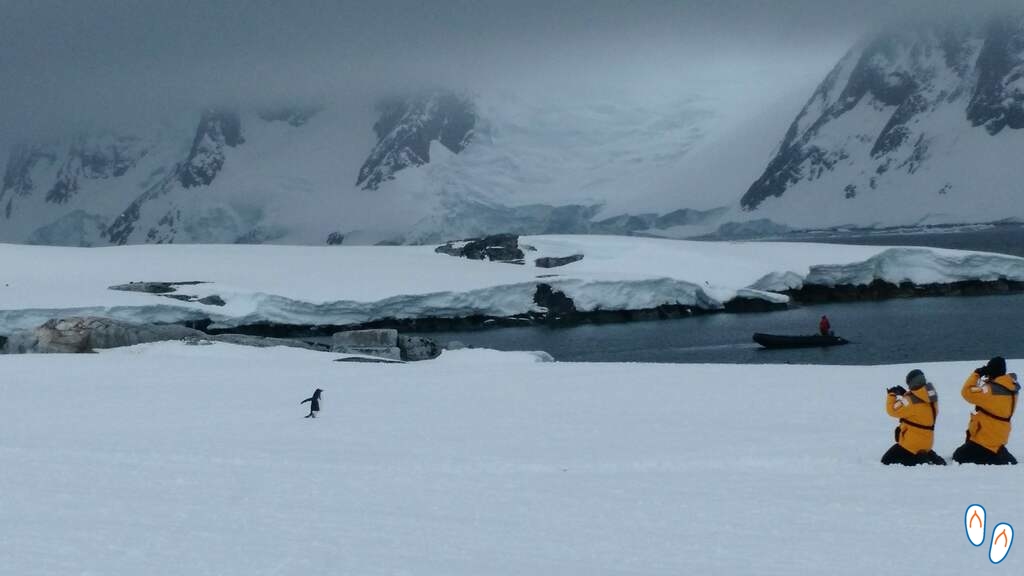 Photographing penguins in Antarctica
Photographing penguins in Antarctica
You’ll probably see a lot of penguins – and up close. And you’ll be amazed at how funny they are. Penguins are birds that have evolved with the sea as their natural habitat. Penguins come to earth to breed. The difference in agility of a penguin in water and on land is imense.
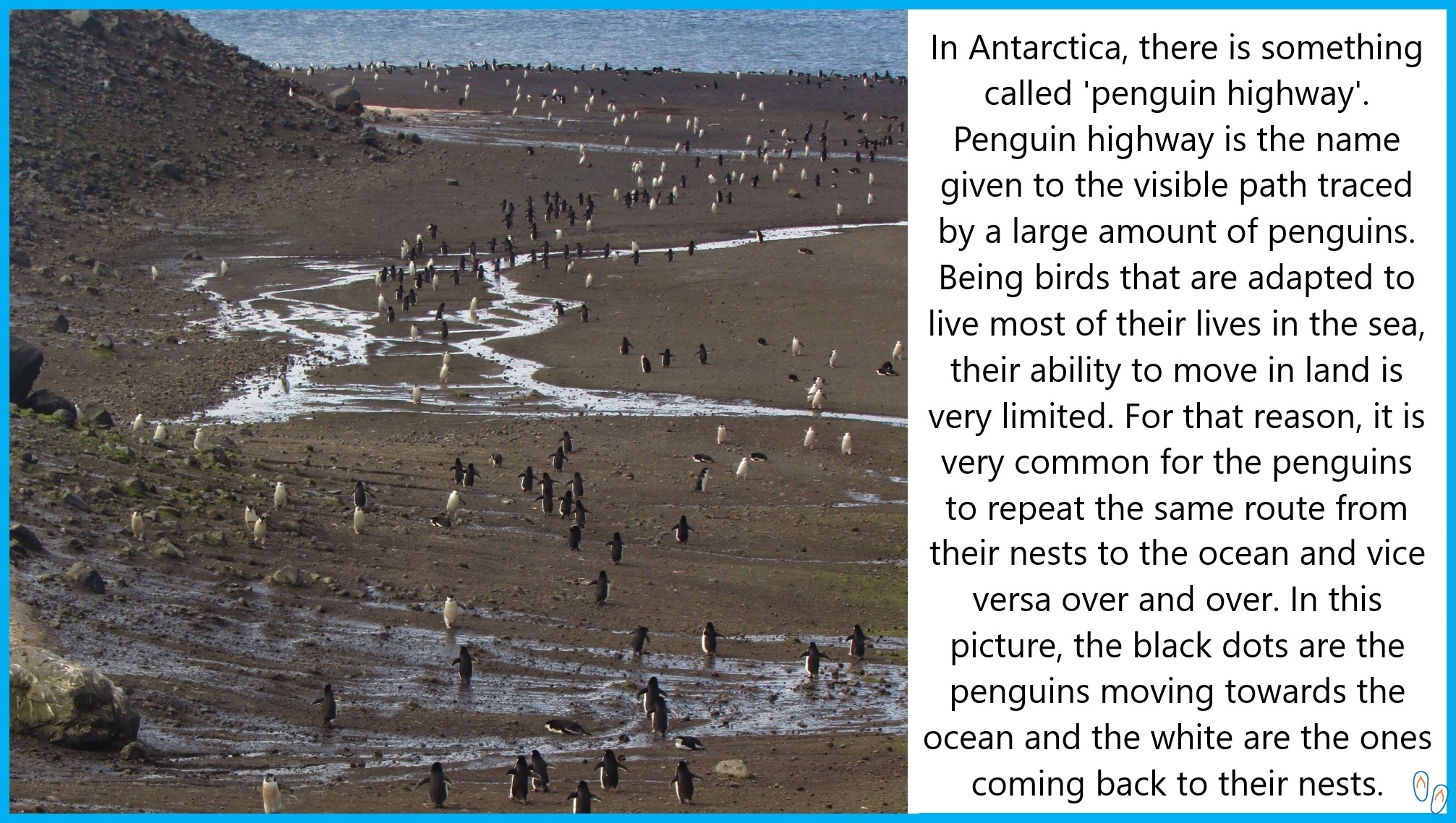
How much is a trip to Antarctica?
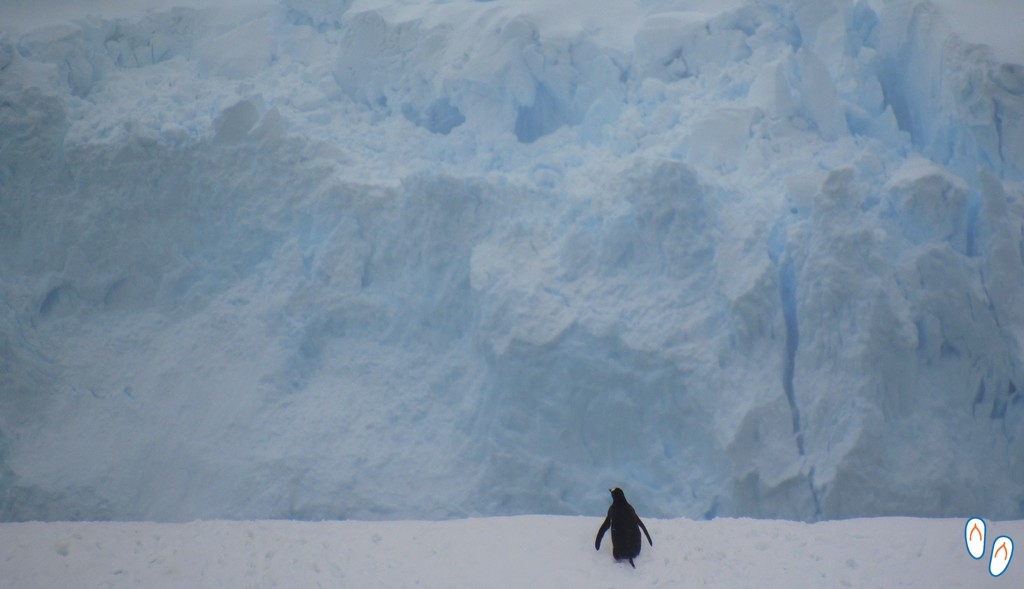
This is definitely the hard part. It is necessary to save some money to go to Antarctica. But you know what? It is worth every penny. And, in my honest opinion, the cost-benefit is actually very good.
You will get at least 9 or 10 days of lodging in comfortable rooms, with full board (very good food), activities all day, excellent staff to ensure your safety and help you in whatever you need, and all this for what? To go to Antarctica ! I mean, of course, it is expensive!
Prices vary according to lenght of the trip, to the kind of cruise, number of people on the ship and with the chosen room. Quark works with cruises from $6,000 range per person. Yes, it’s expensive. But it is an unique experience!
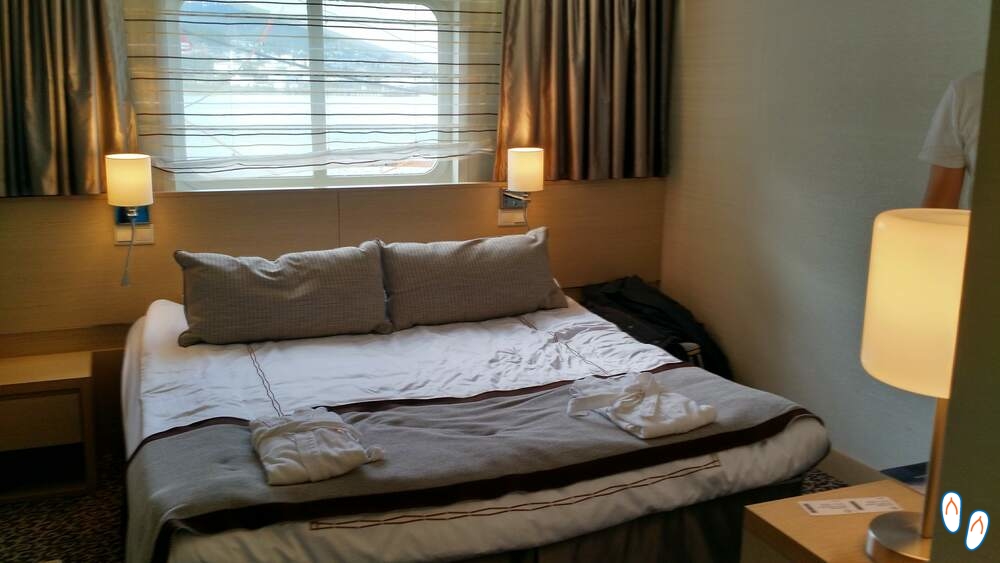 Our cabin was double but with obstructed vision – turned out to be much better than we expected!
Our cabin was double but with obstructed vision – turned out to be much better than we expected!
Want to save money? Most companies open a few discount windows, you have to seize the opportunities. The greatest of all is called the ‘last minute deal’, which is offered through travel agents in a matter of days before boarding, to fill in the few vacancies that were left over or canceled.
This is what we did, we kept in touch with the agencies that sell these trips and we were able to buy a few days earlier with a 40% discount on the original price. If you want to know more, feel free to write us in the comments below or send us an email.
What is Drake’s passage?
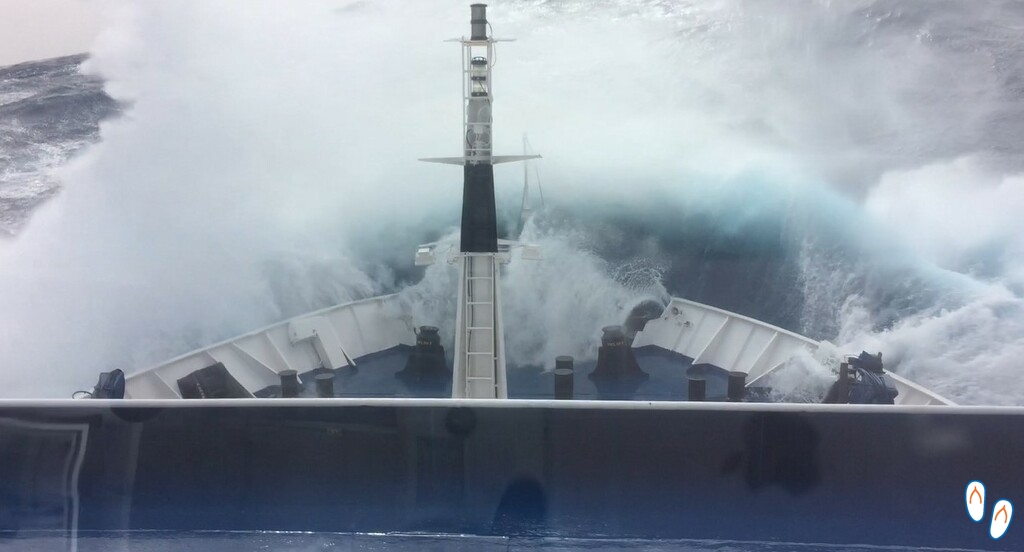 Waves hitting the ship in the Drake Passage on our way back to Ushuaia – Photo by Sharique Chishti
Waves hitting the ship in the Drake Passage on our way back to Ushuaia – Photo by Sharique Chishti
Drake Passage is the name given to the stretch of sea between Cape Horn, at the southern tip of South America and the first Antarctic Islands.
The Drake Passage is known for being the most turbulent sea in the world. This is because strong wind currents cross this strait. Our expedition team referred to this passage as the “toll” we have to pay to go to Antarctica.
The “mood” of the Drake Passage can vary greatly. The captain will always be consulting the forecast to find the best possible conditions for the trip. However, they have an agenda to fulfill, and for this reason, it is not possible to guarantee a good time always.
We were very lucky on our way to Antarctica as we experienced an extremely quiet pass. Waves up to 2 meters, which is unusual for the region. Fortunately this first part of the trip was as calm as possible and we ended up arriving in Antarctica even a bit earlier than scheduled.
On the way back, however, there was no escape. The storm came, and no matter how hard the crew had worked to catch only the tip of it, the feeling was that the ship would turn. The waves reached more than 10 meters high. The ship bended to one side and the other, things were falling to the ground. Many people felt sick and did not leave the room until we got close to South America.
But is it safe?
This kind of cruise ships are reinforced and prepared for situations like this. Remember that many smaller and older vessels have already faced these seas with much less resources than they have today.
But, honestly, it is a matter of trust. We trusted that the captain and the crew were doing their job. We trusted that they would not put us in any risky situation, even because of the very harm it would cause to the reputation of the company.
The expedition team repeated several times “it’s not dangerous, it’s just uncomfortable”. Which was always good to hear again, because the feeling was that it would really turn.
2. Activities in Antarctica
 Zodiac heading towards Peterman Island, Antarctica
Zodiac heading towards Peterman Island, Antarctica
An expedition to Antarctica has several activities during the day. The main ones are the landings and the zodiac cruises – a type of inflatable and motorized boat of high resistance.
For the whole period in Antarctica, the expedition team will schedule at least 1 landing per day – most days we had two. The landing takes place in groups, and is done through the zodiacs. The time on land will vary according to the schedule of the day and with the amount of people on the ship.
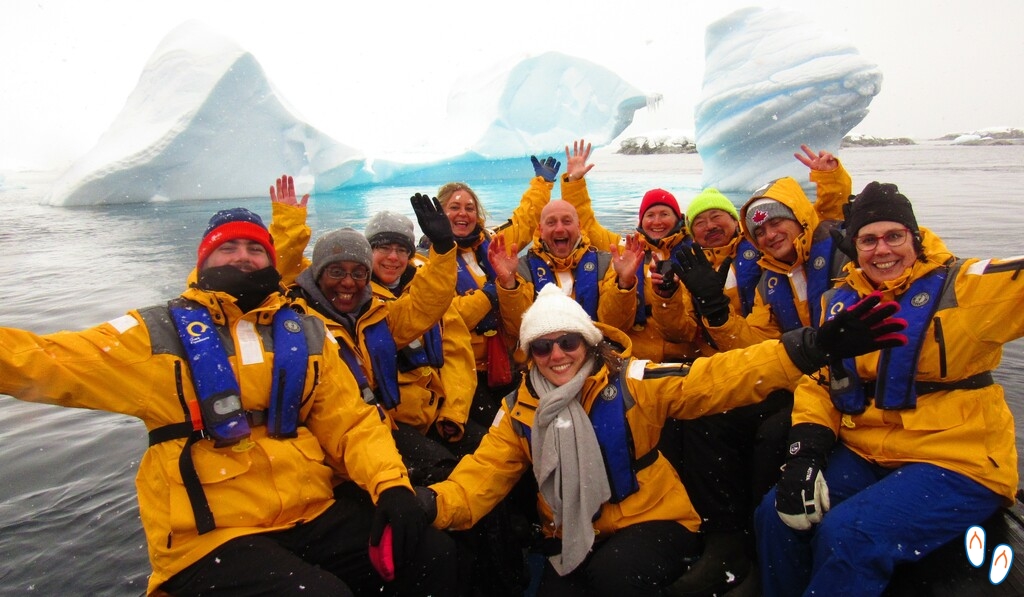 Our group during the zodiac tour
Our group during the zodiac tour
The zodiac cruises are rides on these inflatable boats guided by a member of the expedition team. The purpose of the zodiac cruise is mainly to explore the Antarctic environment, entering areas of more difficult access, observing wildlife, and contemplate the beauty and magnificence of Antarctic nature.
Internal activities on the ship completed the schedule. Every day, there was at least one presentation from the expedition team with general information about places we would visit next, and the expected conditions. During the days of navigation, many lectures were held by Quark team to tell us about the history, geology and wildlife of Antarctica.
Extra Activities
As options for activities to be paid separately, our trip included camping, kayaking and paddling. All three activities have filled all vacancies – some of them even before the date of the trip. I’ll detail each one below.
Another optional extra activity was the polar plunge – fast diving in the icy waters of Antarctica. Many people with suicidal tendencies (lol) decided to jump and face the waters at almost 0ºC.
Camping
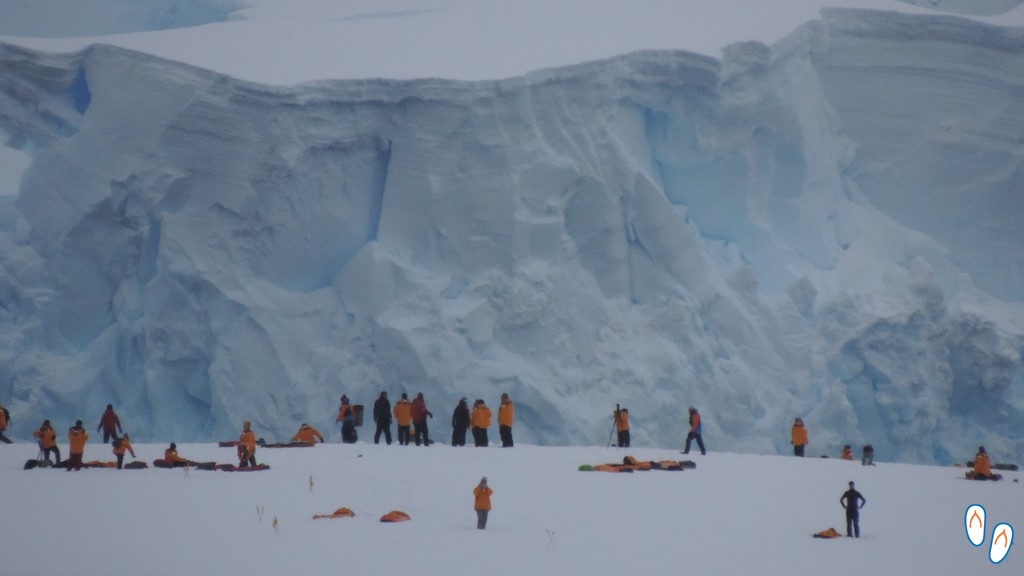 Camping in Leith Cove, Antarctica
Camping in Leith Cove, Antarctica
On our trip the Antarctic camp had 60 spots available, which were completed very quickly. The cost per person was $ 295, and Quark provided all the necessary material. The camping equipment includes a sleeping bag with a fleece liner, a waterproof layer, and 2 thin mattresses. No tents are used, people stay outdoors.
The expedition staff will always seek to choose the best night of the trip for camping, considering the weather conditions and the safest and more comfortable land options. The camp may not happen if they do not find a good option.
As climate conditions in Antarctica can change very rapidly, campers must be able to deal with sudden changes in programming. On the night the camp was scheduled, shortly before the departure time, it was announced that unfortunately they would have to cancel the activity due to the change of weather. About half an hour later, when the campers were already returning to their rooms, it was announced that weather changed again, and they finally decided to do the activity.
How it is to camp in Antarctica
We chose not to camp, but most people we talked said pretty much the same thing: you almost don’t sleep, because of the low temperatures, the discomfort and even because of the clarity of the sky. But everyone also said it was worth it. Click here to read a testimonial from a friend of ours from this trip that embarked on this experience.
Some people asks us if the sky is very beautiful or if it was possible to see the Southern Lights. Unfortunately no, the sky remained cloudy throughout our stay in Antarctica – which I believe to be the most common scenario. Even if the sky had cleared, the Southern Lights would only be visible with the dark sky (during winter time); which is not the case because we were in the summer.
Kayaking
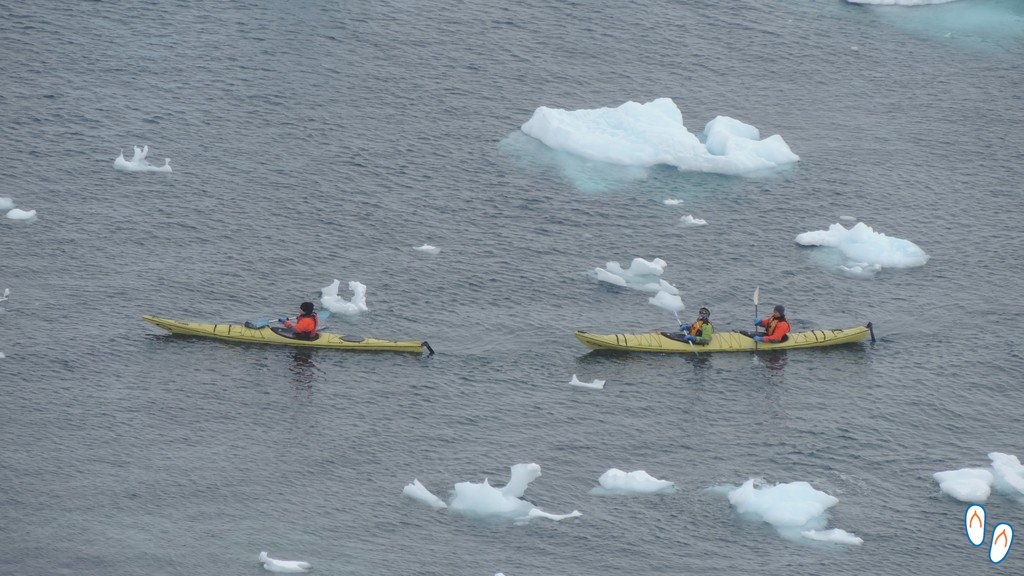 Kayaking in Paradise Harbour, in Antarctica
Kayaking in Paradise Harbour, in Antarctica
Kayaking was the most expensive activity of our ship – it costed $ 1000 per person. But it is also the most enjoyable one. The people who signed up for this activity got to kayak 5 times in Antarctica. Just picture it, kayaking among icebergs, with penguins swimming and jumping in the water around you. The experience must be incredible.
However, kayaking is a somewhat more challenging activity and it is recommended only for people with some experience.
Quark provides all the necessary equipment for this activity, such as neoprene boots, waterproof clothing, life jacket and a dry-bag to put some belongings.
Paddling
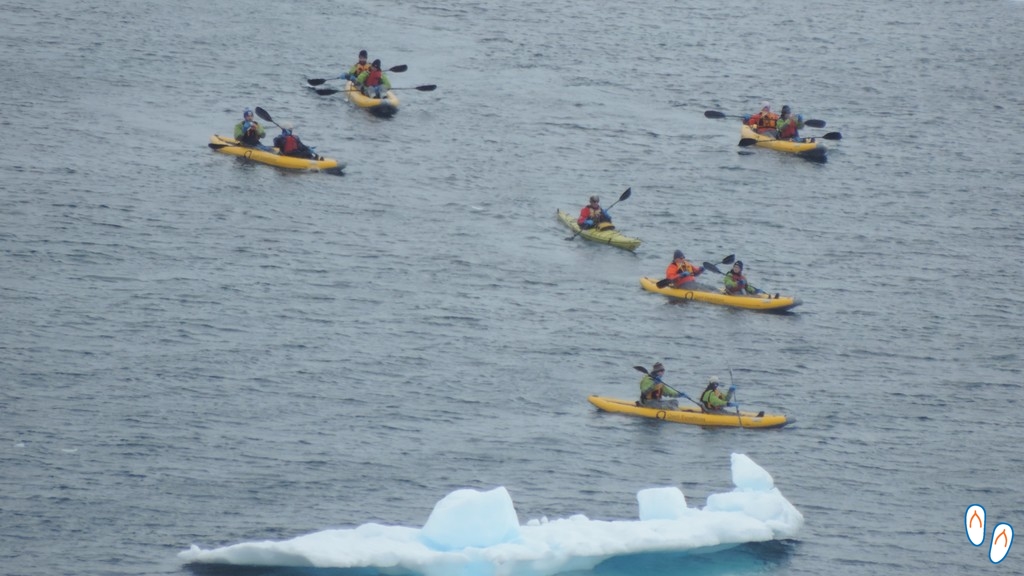 Paddling in Paradise Harbour, in Antarctica
Paddling in Paradise Harbour, in Antarctica
The difference from paddling to kayaking is that the paddling is in a larger, inflatable boat with a flat surface, what ensures greater stability. For this reason, paddling is the best option for beginners.
The cost of paddling per person was $ 225, but each would only have the chance to perform it once. The groups formed were up to 10 people. The activity usually lasts between 1h and 1h30.
This was the only extra activity we signed up for; however many people who showed interest unfortunately did not have the opportunity to do it.
Just as in kayaking, Quark provides all the main equipment for the activity.
It is worth mentioning that whoever performs kayaking and paddling, will be doing it during the period of other activities (such as zodiac excursions and landings). Which means you can have less time in regular activities or even be deprived of some to participate in the extras.
3. Day-by-day of our trip to Antarctica
 Colony of penguins on a giant iceberg in Pleneau Bay, Antarctica
Colony of penguins on a giant iceberg in Pleneau Bay, Antarctica
Officially, our schedule with Quark was from December 9th to 19th. But this schedule included the first night in Ushuaia at the Albatroz Hotel. On the 9th we just had a briefing in the hotel of how to proceed for embarkation.
Our adventure begun on December 10th. We left our bags with a Quark ID tag at the hotel reception at 10am. We had the free morning in Ushuaia and after lunch we returned to the hotel reception to meet with the Quark staff.
At 4:00 p.m. we entered the ship that would take us to Antarctica.
1st day – Presentation
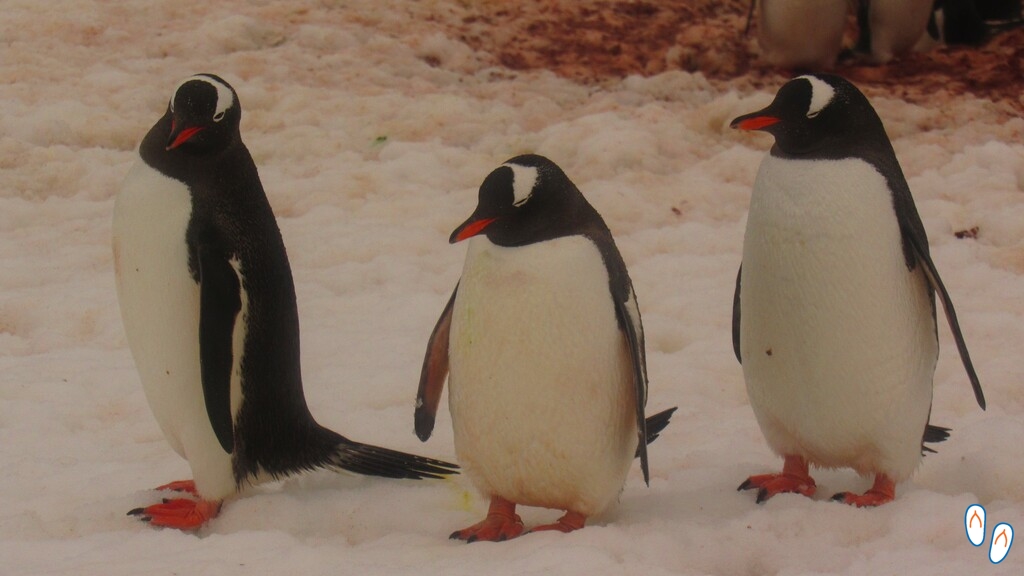 ‘Pinguins-gentoo’ in Danco Island, Antarctica
‘Pinguins-gentoo’ in Danco Island, Antarctica
As we entered the ship, we handed over our passports (which is retained by Quark throughout the trip) and took an identification card.
Then we headed straight to our room, where our bags were already waiting for us. We chose a room with obstructed view as we thought the price difference made up for it. I was surprised at how good the room was. Being one of the cheaper cabins on the ship, there was a comfortable space, a large window, and the view was not even totally obstructed. We could see the sea.
In half an hour we were all gathered in a welcome coffee, where we were greeted by Quark’s expedition staff. Shortly after we had a briefing with the presentation of the crew and some safety procedures.
The ship sailed around 4:45 p.m. At the moment, we all went the outer area to watch America disappear on the horizon.
2nd day – Between America and Antarctica
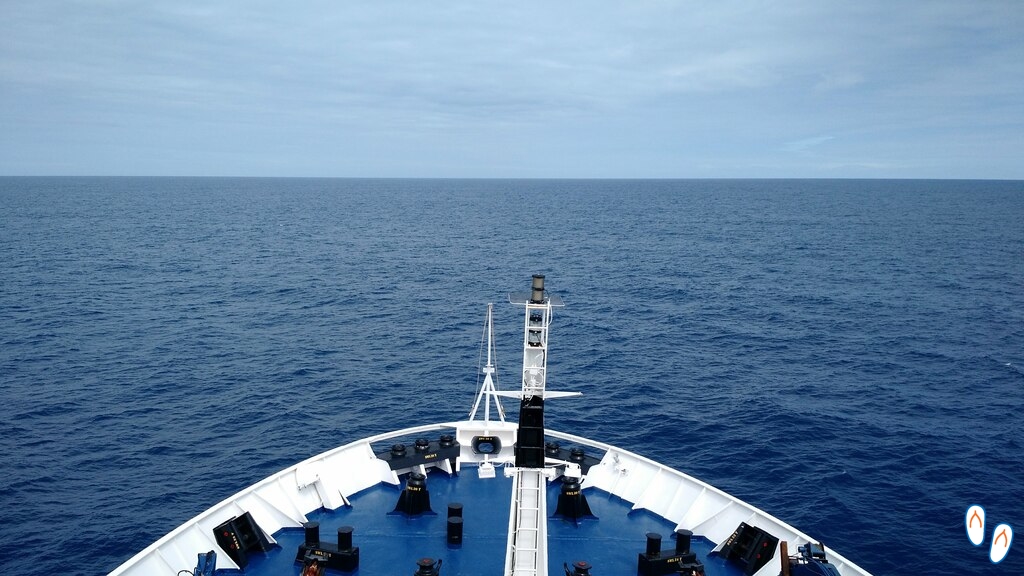 A calm Drake’s Passage in our way to Antarctica
A calm Drake’s Passage in our way to Antarctica
The 2nd day was an entire navigation day. When looking to the horizon, the calm blue sea was all around. Drake’s Passage has given us a very comfortable trip on our way to Antarctica. That allowed everyone to participate all activities and to explore the outside normally.
Our breakfast was at 8pm. Shortly thereafter, we had a lecture on IAATO, the International Association of Antarctic Tourism Operators, of which Quark is a member. Basically, since Antarctica is an international territory (it does not belong to any country), IAATO defines norms of visitation to the Antarctic continent to preserve nature and wildlife to the fullest.
AIso in the morning we had a boot-testing and biosecurity session. Biosecurity is basically the cleaning of the clothes that would be used on landings as to avoid carrying microorganisms from other places to Antarctica.
In the afternoon, we had interesting lectures on geology and ornithology. Before dinner time, we still had a briefing for an update of the schedule. After dinner, one of Quark’s members organized a ‘bar talk’ to tell fun travel stories.
3rd day – Arriving in Antarctica
 View of Danco Island, Antarctica: colonies of Gentoo Penguins and Adelie Penguins
View of Danco Island, Antarctica: colonies of Gentoo Penguins and Adelie Penguins
With the calm sea at Drake Passage, the captain decided to accelerate. We were able to schedule the first landing in Antarctica by the end of the 3rd day.
During the morning and afternoon, we had another briefing and 2 other interesting lectures, one about photography and another about whales. There were also some specific briefings for the extra activities. It was announced that the camp was scheduled to be set in the following evening.
By the end of the afternoon, we’ve started looking for the first icebergs! Soon enough, we would be landing for the first time in Antarctica, at Danco Island.
They anticipated dinner at 6:30 p.m. At 8:30 p.m., the departure procedure for Danco Island began. We got on the zodiac to then experience stepping on Antarctica for the first time!
When stepping ashore, it was when we realized that we were actually in Antarctica! How was that possible? It is difficult to even describe the experience.
We hiked for about an hour on Danco Island, where we could observe penguin colonies. ‘Gentoo penguins’ and ‘Adelie penguins’ living together in their nests – amid lots of excrement – but still incredible. At this moment, in this place so wild, with so much to observe, it felt like the pinnacle of our trip. But the journey was just beginning.
4th day – Lemaire Channel / Peterman Island / Pleneau Bay / Leith Cove
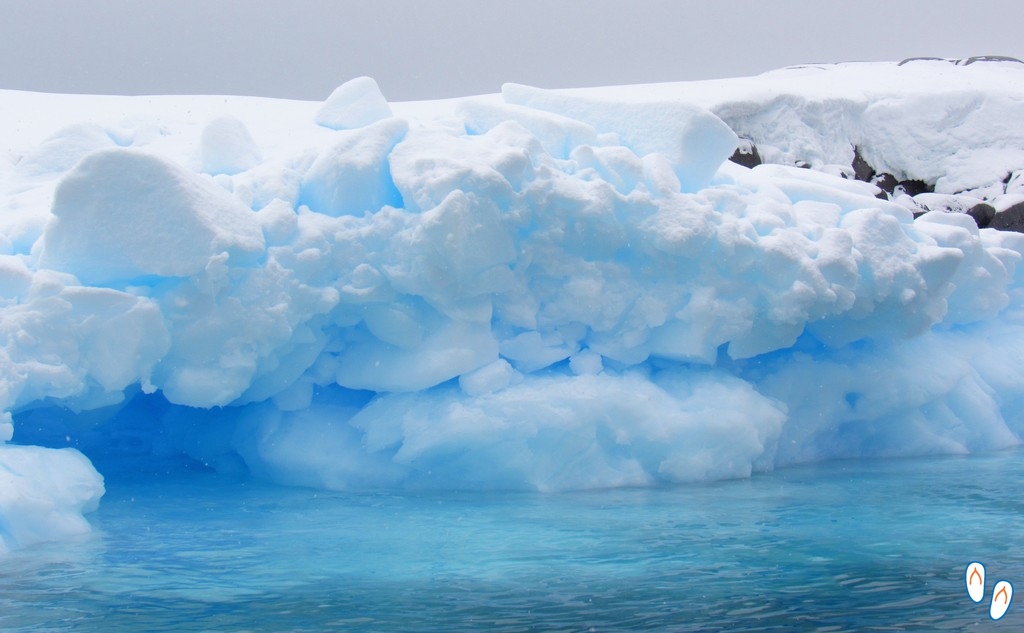 Icebergs in Pleneau Bay, Antarctica
Icebergs in Pleneau Bay, Antarctica
The day before, Ali, the leader of our expedition, announced that this morning we would try to cross a narrow strait called Lemaire Channel.
The very day before, some ships have tried to cross and failed because of the large amount of ice. “But the look is beautiful and I think it’s worth a try,” she said. And she was absolutely right! Not only we did get through but we also could appreciate that incredible visual without comparison. Colossal mountains of ice and rock rising from the sea and losing sight in the clouds.
That was at 7:30 in the morning.
Lemaire Channel
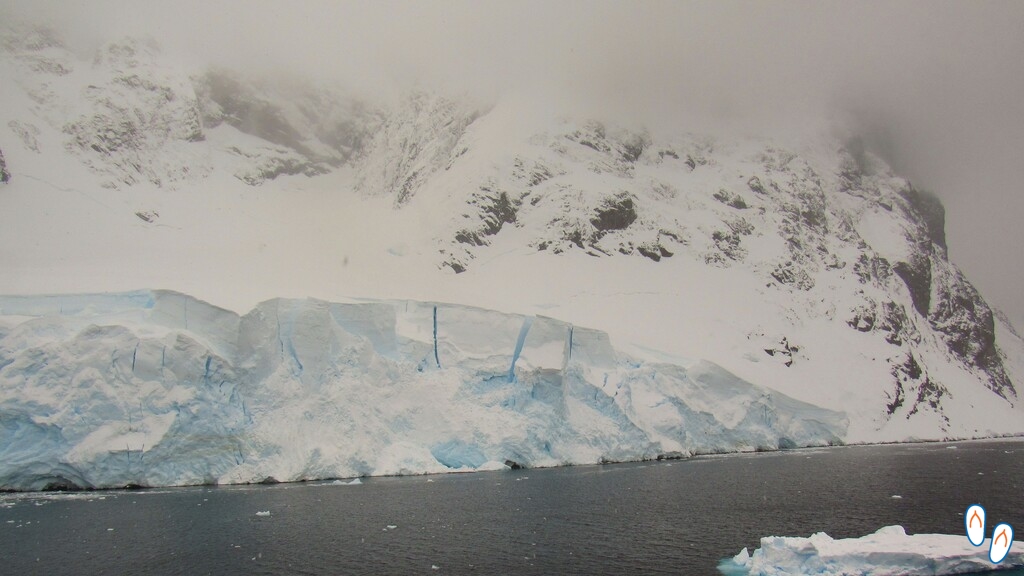 Crossing the Lemaire Channel among the gigantic mountains of Antarctica is sensational
Crossing the Lemaire Channel among the gigantic mountains of Antarctica is sensational
For those who imagine Antarctica as an immense white plain, will probably be very surprised. Antarctica is the continent with the highest average altitude (2000m) in the world.
In the narrow Lemaire Channel, it is possible to perceive and be astonished by the size of the mountains of rock and ice, which contrast with the calm of the protected waters of the channel. The boat passes very close to the mountains and they are so high that you can not see the summit.
After crossing Lemaire Channel, breakfast was served. Right after, groups started preparing for zodiac cruising and landing on Peterman Island.
Peterman Island
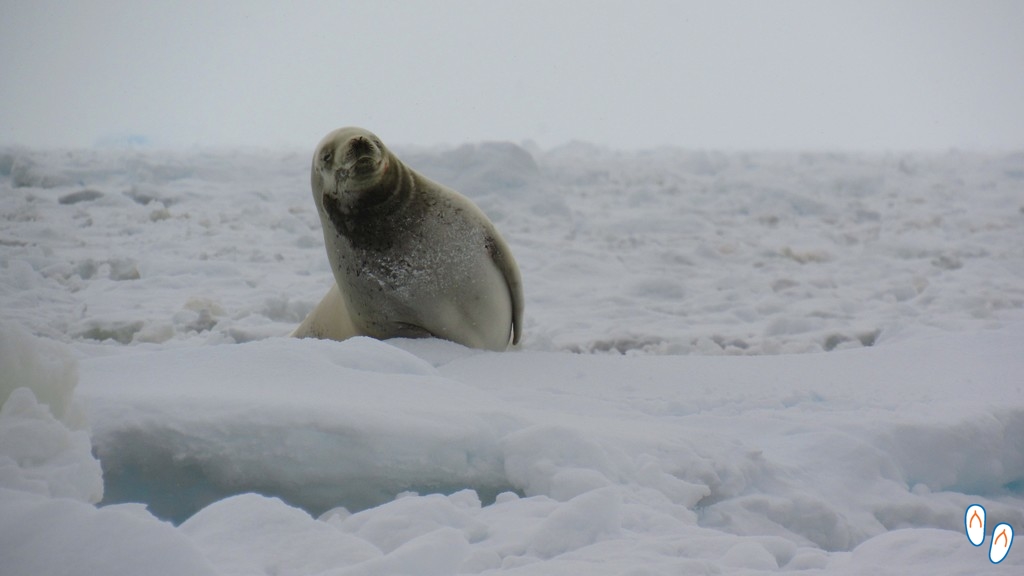 Crabeater seal in an iceberg next to Peterman Island, Anttarctica
Crabeater seal in an iceberg next to Peterman Island, Anttarctica
Peterman Island is a volcanic island. Its coast is formed by small rocky beaches and steep mountains. In this island is located an old Argentine naval refuge. The refuge (a small wooden house) sits on the side of a gentoo-penguin colony.
Peterman Island is considered an ‘Important Bird Preservation Area’ (IBA). Not only it is home of 3000 pairs of ‘gentoo penguins’, the island has also many ‘adelie-penguins’, and some species of cormorants, petrels and skuas.
After a 1h walk on the island, we did a zodiac cruise around it, where we spotted many seals, mostly crabeater seals.
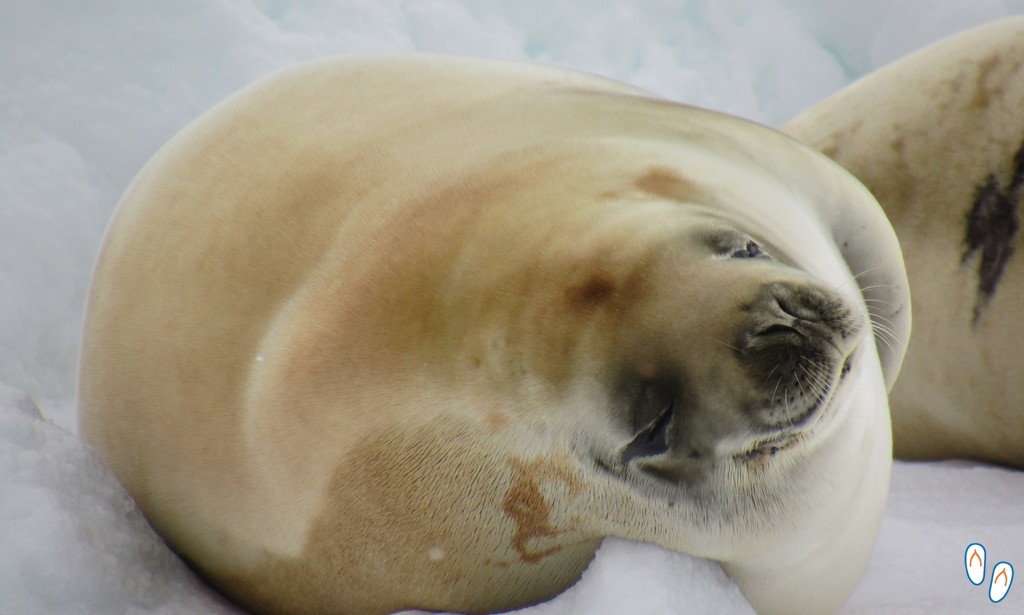 Crabeater seal taking a nap in an iceberg
Crabeater seal taking a nap in an iceberg
Pleneau Bay
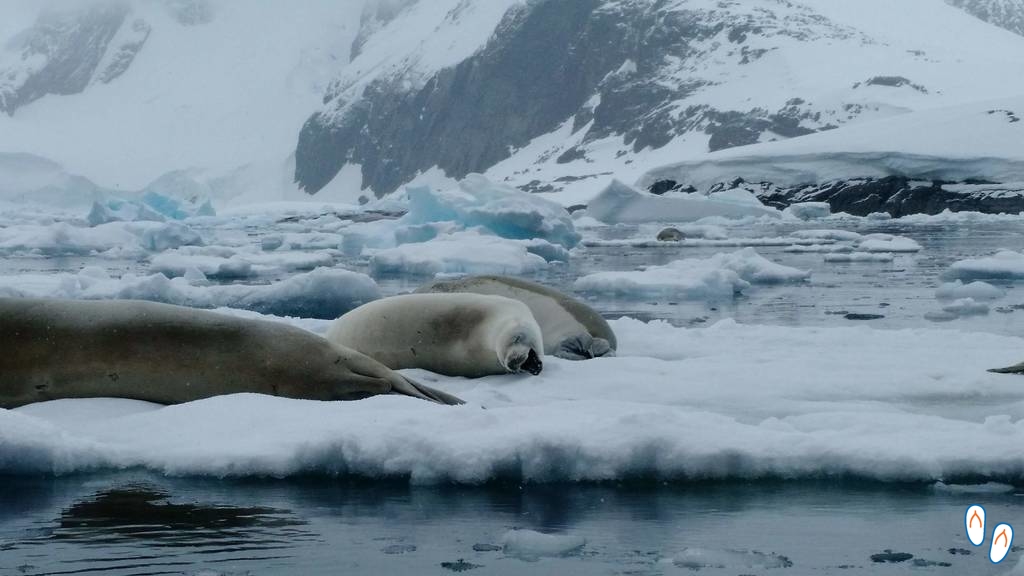 “Just another 5 minutes!” – crabeater seal yawning between naps on the iceberg in Pleneau bay, Antarctica
“Just another 5 minutes!” – crabeater seal yawning between naps on the iceberg in Pleneau bay, Antarctica
After lunch, we took a zodiac cruise in Pleneau Bay.
Pleneau Bay is full of naturally sculpted icebergs. The landscape is amazingly beautiful. In Pleneau Bay, you can also watch dozens of penguins and seals in their natural environment.
 Icebergs sculped by nature in Pleneau Bay, Antarctica
Icebergs sculped by nature in Pleneau Bay, Antarctica
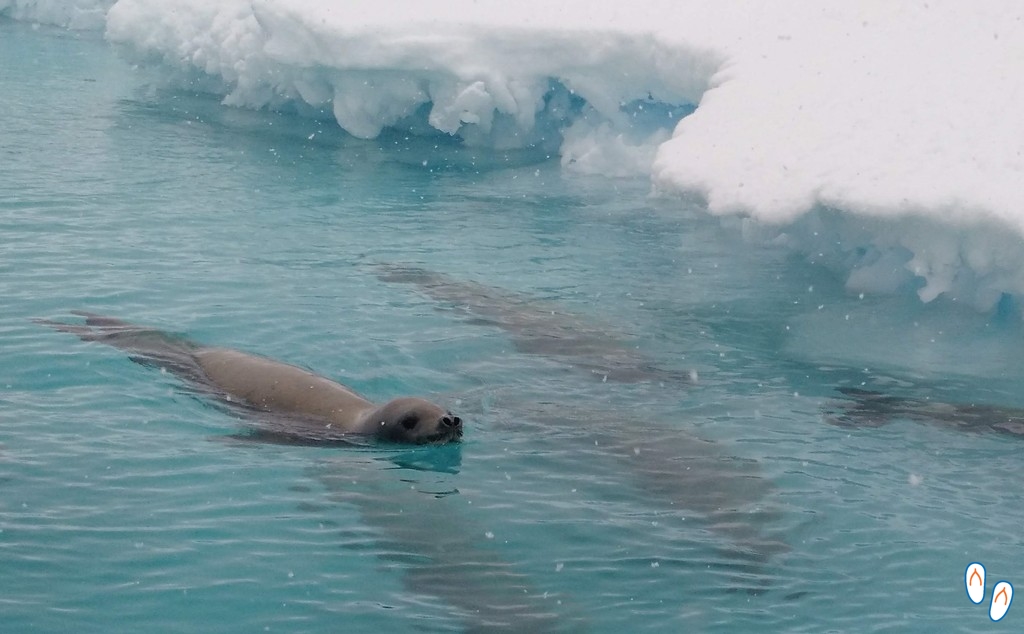 Group of seals swimming near the icebergs in Pleneau Bay, Antarctica
Group of seals swimming near the icebergs in Pleneau Bay, Antarctica
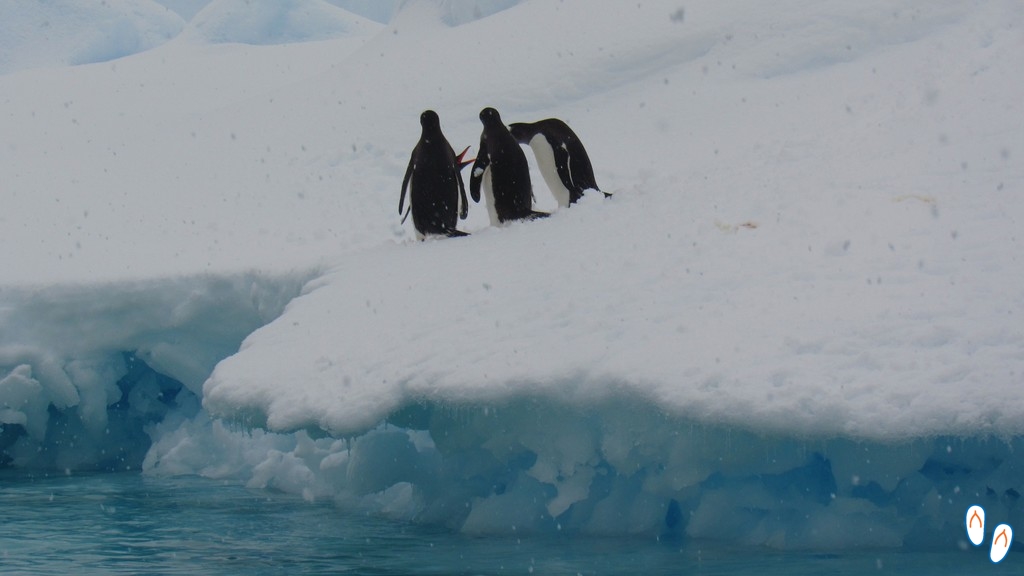 Penguins “discussing” who will be the “guinea pig” to jump first – the leopard seal is one of the penguin predators in Antarctica
Penguins “discussing” who will be the “guinea pig” to jump first – the leopard seal is one of the penguin predators in Antarctica
At the end of the afternoon, we had another briefing, which ended up being interrupted, as we saw humpback whales near the ship.
Dinner was first served to campers, that were getting ready for their big adventure. The campers were already set out for camp at Leith Cove, a small island sheltered by the slope of the mainland. About eight o’clock at night, Ali announced sadly that because of a sudden change in weather they would have to cancel the camp.
However, shortly after that… surprise!!!! Weather has changed again! The forecast for the night has improved and the camping was back on schedule!
For those who stayed on the ship, still had the opportunity to participate in a movie session with drinks and popcorn!
5th day – Paradise Harbour / Whilhemina Bay
 Tail of humpback whale in Paradise Harbor, Antarctica
Tail of humpback whale in Paradise Harbor, Antarctica
Paradise Harbour
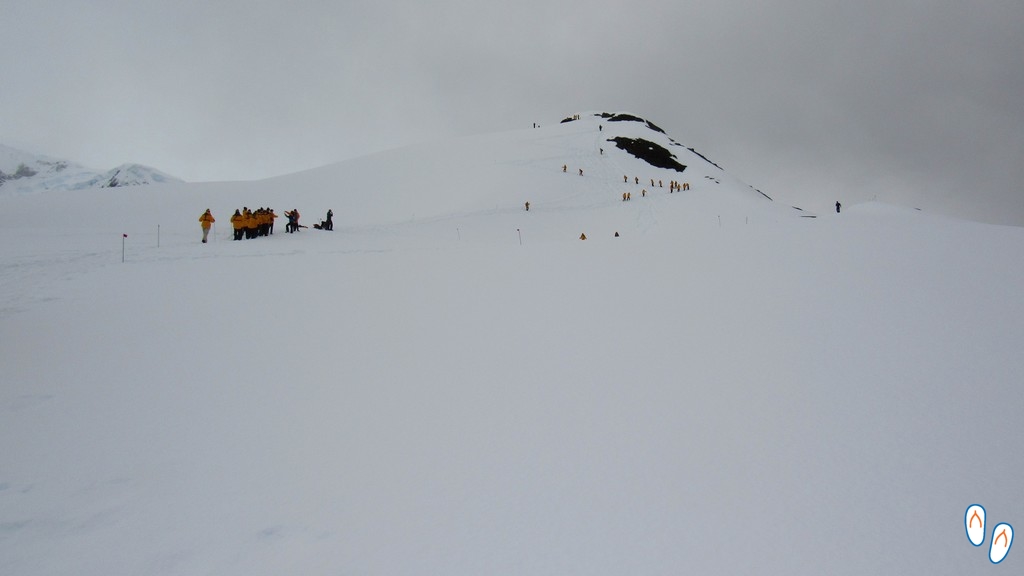 Our first walk on the Antarctic continent – the path was all uphill but from the top one could see the whole bay
Our first walk on the Antarctic continent – the path was all uphill but from the top one could see the whole bay
On the fifth day we woke up at 6am to have breakfast at 6:30. At 8:30am the first disembarkations for landing and zodiac cruise began. But this landing had something different. It was our first time stepping on the Antarctic continent! As all previous landings were on islands – very close to the mainland, but still … this one had a special “taste.”
Paradise Harbor is one of only 2 harbours for cruise ships on the Antarctic continent. It is also the site of Almirant Brown, an inactive Argentine base.
The zodiac tour was not least special. Actually, it was the best cruise in the zodiac we had. Paradise Bay is deep and very glaciated. Its own format and location alone provide beautiful landscapes. Huge rocks, endless glaciers … even a family of humpback whales swam a few feet from our zodiac!
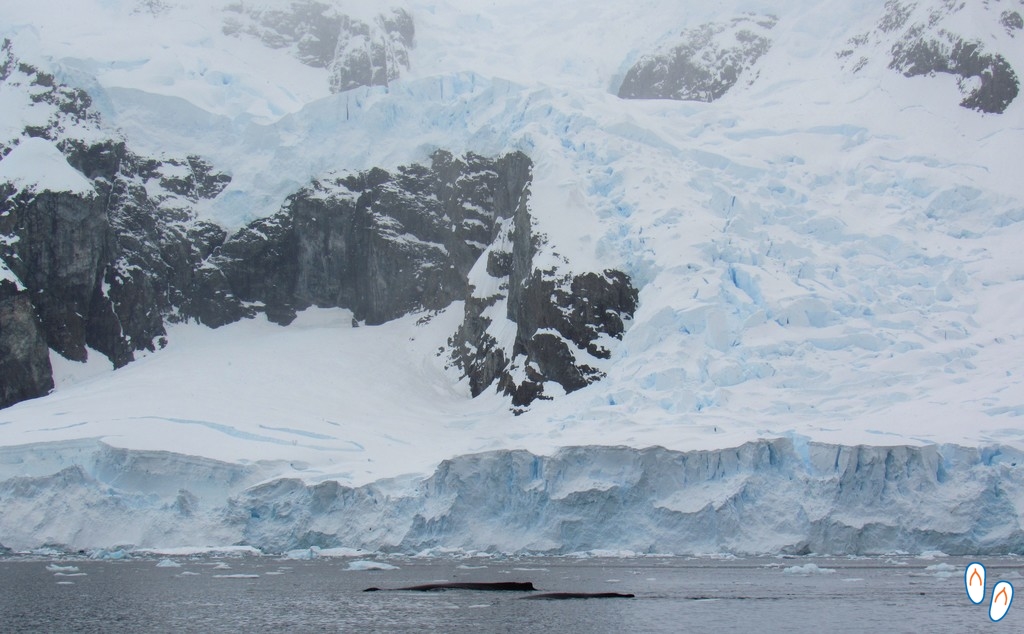 Humpback whales in front of massive glaciers in Paradise Harbor, Antarctica
Humpback whales in front of massive glaciers in Paradise Harbor, Antarctica
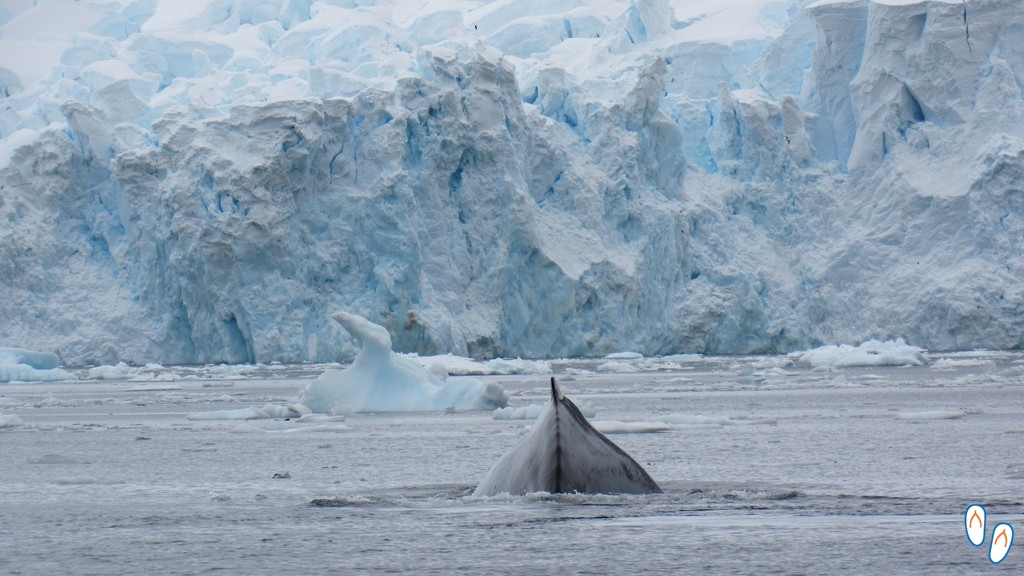 The back of one of the humpback whales that passed us by while we were in the zodiac.
The back of one of the humpback whales that passed us by while we were in the zodiac.
After lunch, we had a new briefing. This time, a great surprise awaited us. This afternoon, we would do what was one of our most spectacular experiences in Antarctica – walking on a huge floating ice field.
Whilhemina Bay – “fast ice”
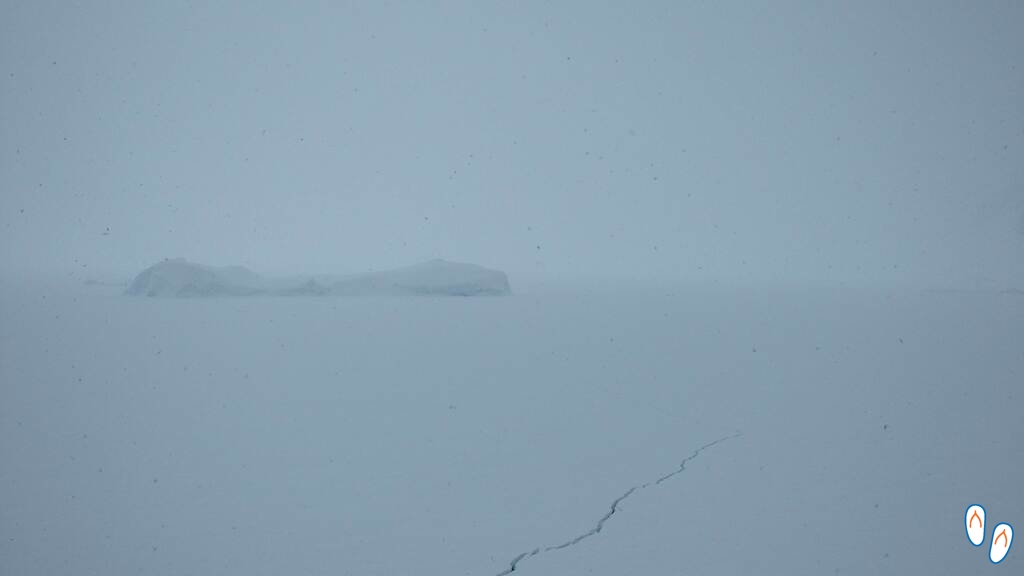 The “white immensity” of the ice sheet formed by the frozen sea
The “white immensity” of the ice sheet formed by the frozen sea
Around 4:00 p.m., at Whilhemina Bay, we approached the huge sea ice field formed by sea water. The Quark cruise ship began to approach and break the thinner ice. At one point he anchored and the expedition team went out to assess the conditions. When they returned, it was decided that the landing was not safe and would have to move to another spot. Around 5:00 p.m., the zodiacs that would take us to the white landscape of Antarctica began to leave.
At first I was afraid. Knowing that you were stepping on an ice sheet with an ocean beneath you is not very comforting. But the experience is so incredible and different that in a matter of seconds I left all the fear behind and just had fun. One of our best experiences in Antarctica – if it is possible to elect one.
For the first time in Antarctica, everything around me was plain white. The only exceptions were the Quark cruise ship and the yellow ‘parkas’ scattered across the ice field. It was snowing all the time. I couldn’t help myself, I just took off the hood and let the cold air in my face.
Quark’s team set up a table with a ‘bartender’ to serve drinks with Antarctica ice. We were all having so much fun, that in the end, it all became a snowball war.
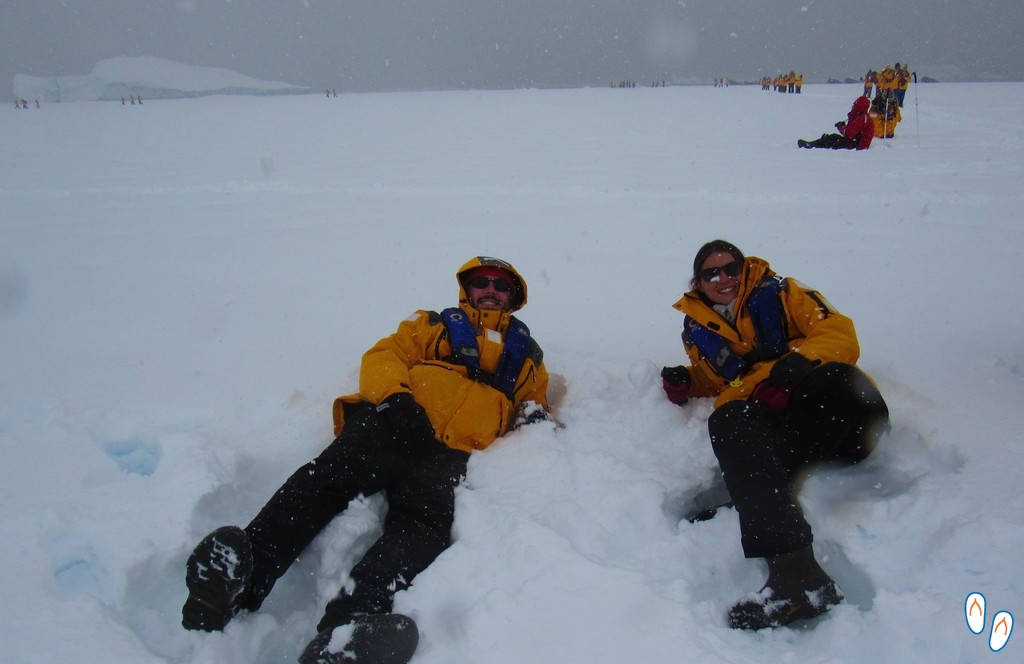 Lying on a giant layer of ice and snow
Lying on a giant layer of ice and snow
Polar Plunge
After this surreal experience, upon returning to the ship, the Polar Plunge was announced – the opportunity to dive into the icy waters of Antarctica. I found incredible the number of people that were up to the challenge – no neoprene or anything. It was fun to watch the despair of some and the joy of others jumping and celebrating as an achievement for the “curriculum of life.”
 A quick dive in Antarctica waters – the “crazy ones” jumping in the water at almost 0ºC.
A quick dive in Antarctica waters – the “crazy ones” jumping in the water at almost 0ºC.
After dinner, the staff invited the passengers to a new confraternization at the bar.
6th day – Great Wall Station / Robert Point
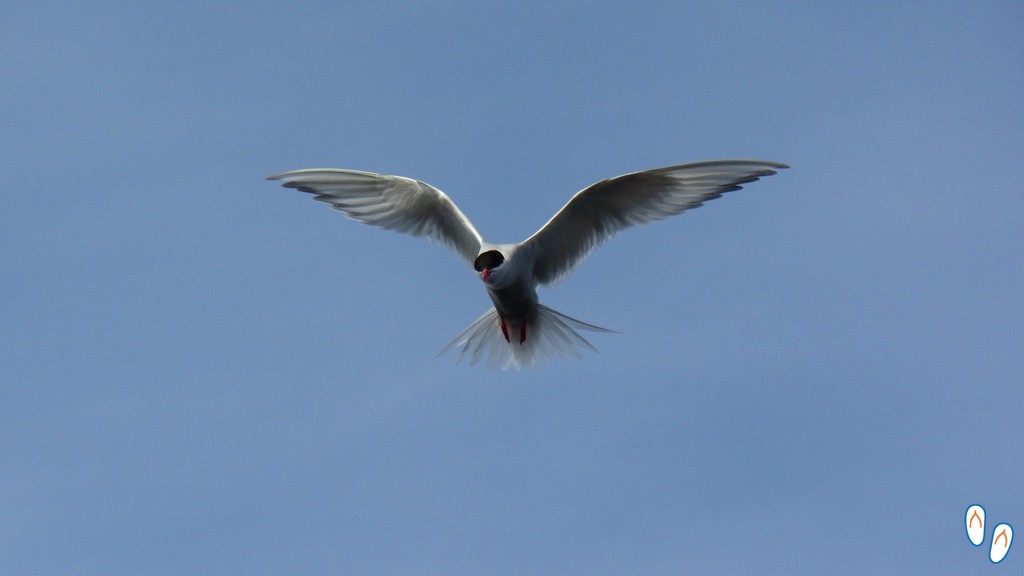 Antarctic Tern, a beautiful bird endemic of Antarctica
Antarctic Tern, a beautiful bird endemic of Antarctica
On our 6th day in Antarctica, the morning was for navigation towards the South Shetland Islands, an archipelago of Antarctic islands, located at the “gate” of the Drake Passage.
Due to the longer displacement, our morning was filled with a lecture on the history of the Antarctic exploration and with an optional painting event. At noon, we had a new briefing, where it was announced that we would perform a zodiac cruise and landing on King George Island, belonging to the South Shetland archipelago. This island is home to the Chinese base Great Wall Station, a major research station for meteorology, tide, geomagnetism, among others.
Great Wall Station – chinese station in Antarctica
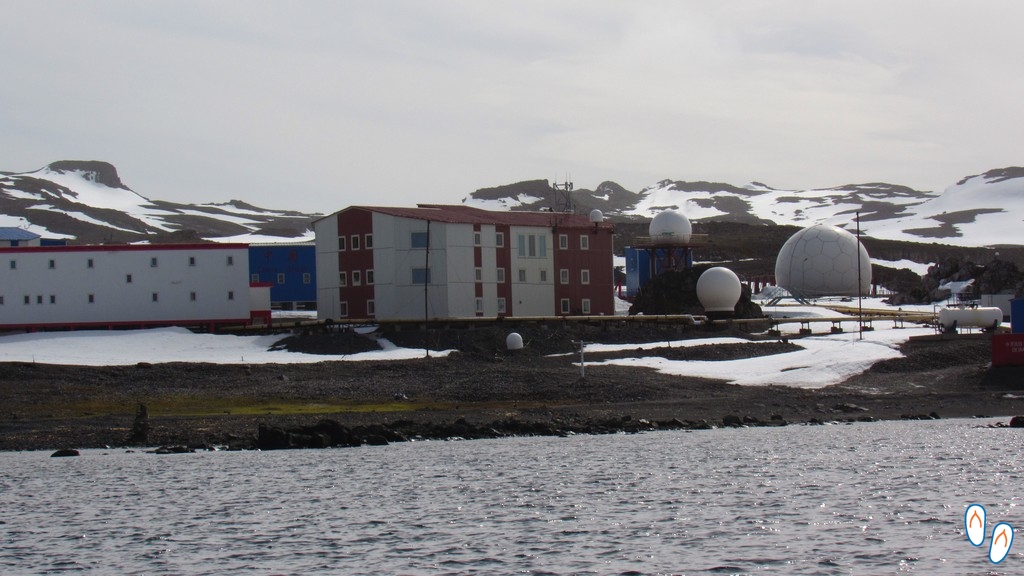 Great Wall Station – chinese station in Antarctica
Great Wall Station – chinese station in Antarctica
The Great Wall Station was inaugurated in 1985 and was the first Chinese research station in Antarctica.
Unfortunately the base was undergoing a restructuring and for that reason we were not granted the internal visitation. For the group of Chinese passengers on our ship, however, it was a great achievement just to be there.
 Weddel Seal on King George Island, right beside to the Great Wall Station in Antarctica
Weddel Seal on King George Island, right beside to the Great Wall Station in Antarctica
At 6:00 pm, the expedition team surprised us with a ‘Polar Barbecue’. Several kinds of meat and a buffet of salad and snacks were served in the outdoor area. It was chilly, but it was a lot of fun.
Robert Point
At 7:30 p.m., a new sequence of landings began for Robert Island, in the center of the South Shetland Islands. Robert Point is a place where the landscape clashes with the heavy contrast of the beach with a large layer of cracked glacier. It is also the first place where we have seen colonies of chinstrap penguins.
The pictures below show some of the wildlife we saw on the site.
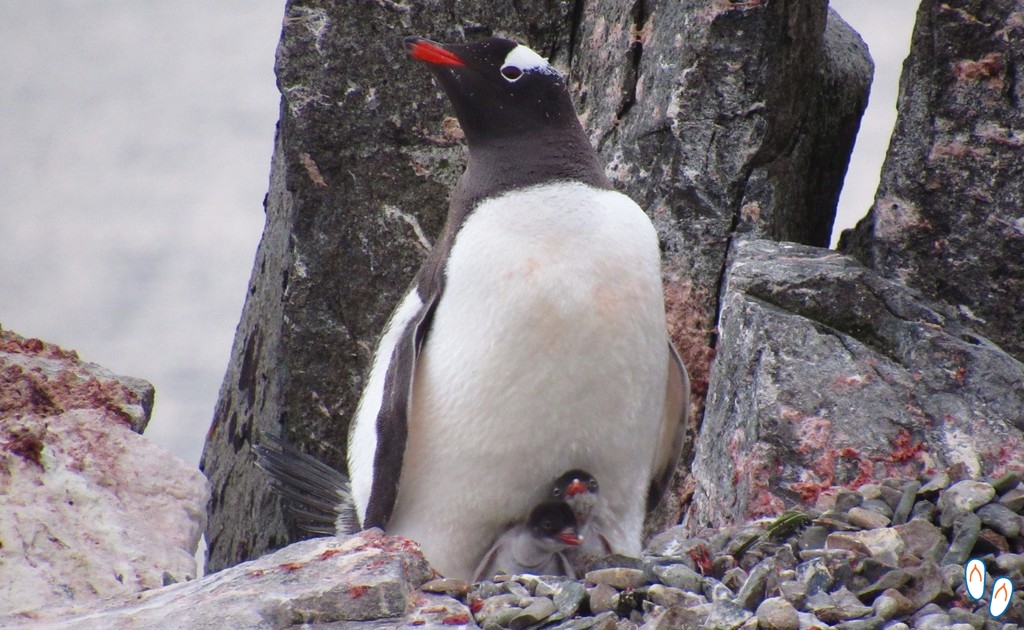 Gentoo Penguin in its nest with 2 chicks – in Robert Island, Antarctica
Gentoo Penguin in its nest with 2 chicks – in Robert Island, Antarctica
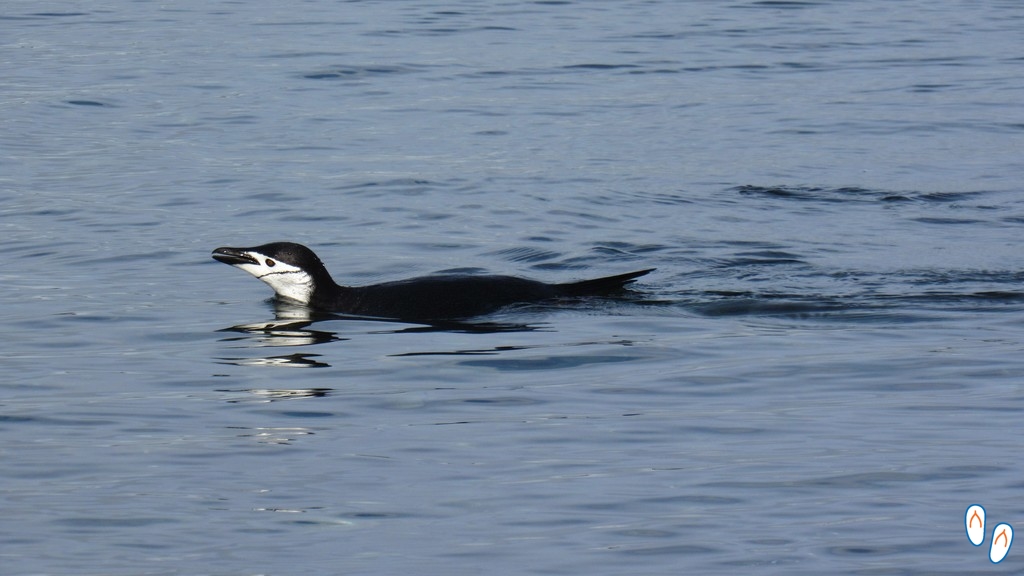 Chinstrap penguin swimming in the Antarctic Ocean
Chinstrap penguin swimming in the Antarctic Ocean
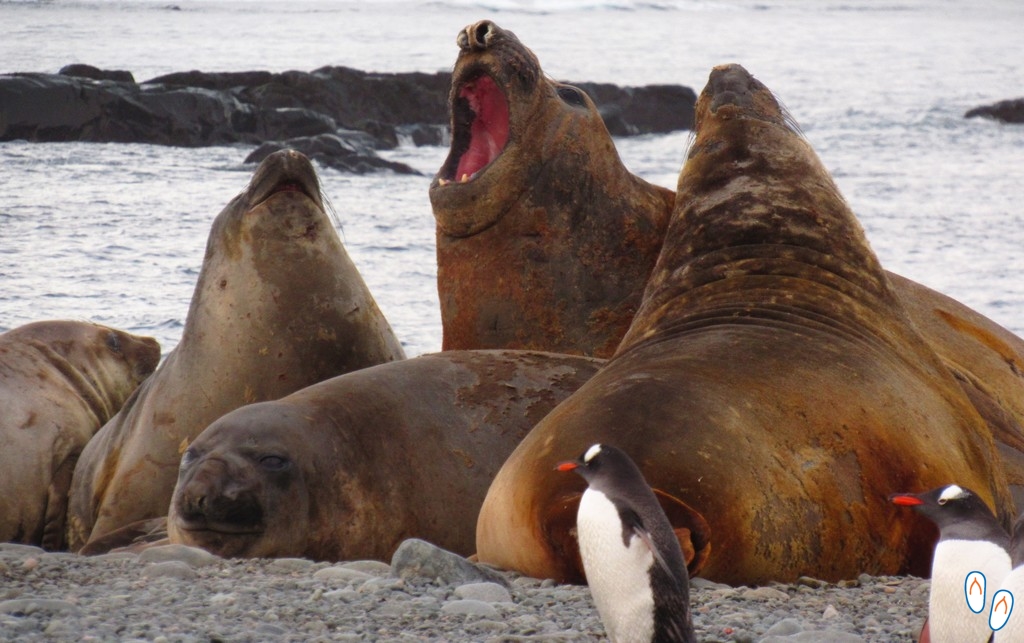 Gentoo penguins passing in front of a group of young sea elephants on Robert Island, Antarctica
Gentoo penguins passing in front of a group of young sea elephants on Robert Island, Antarctica
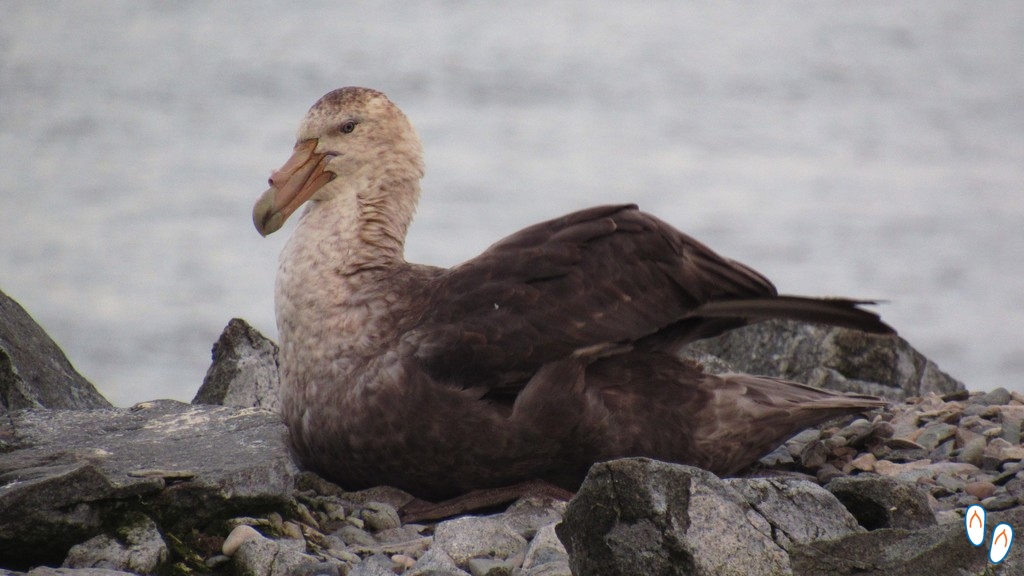 Giant Petrel, a species of predatory and scavenger bird, common in Antarctica
Giant Petrel, a species of predatory and scavenger bird, common in Antarctica
7th day – Elephant Point / Bailey´s Head
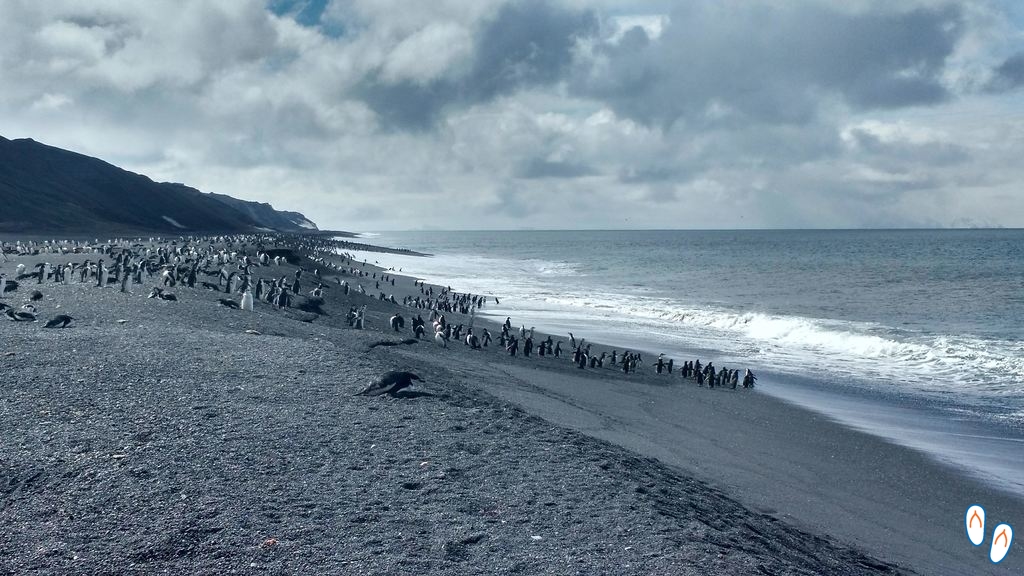 A beach in Antarctica! The picture is from Bailey’s Head, a prominent headland, part of Deception Island
A beach in Antarctica! The picture is from Bailey’s Head, a prominent headland, part of Deception Island
On our last day in Antarctica, still in the Shetland Islands, we woke up at 5:30 in the morning. Our coffee was at 6am and landings began at 7am.
Elephant Point
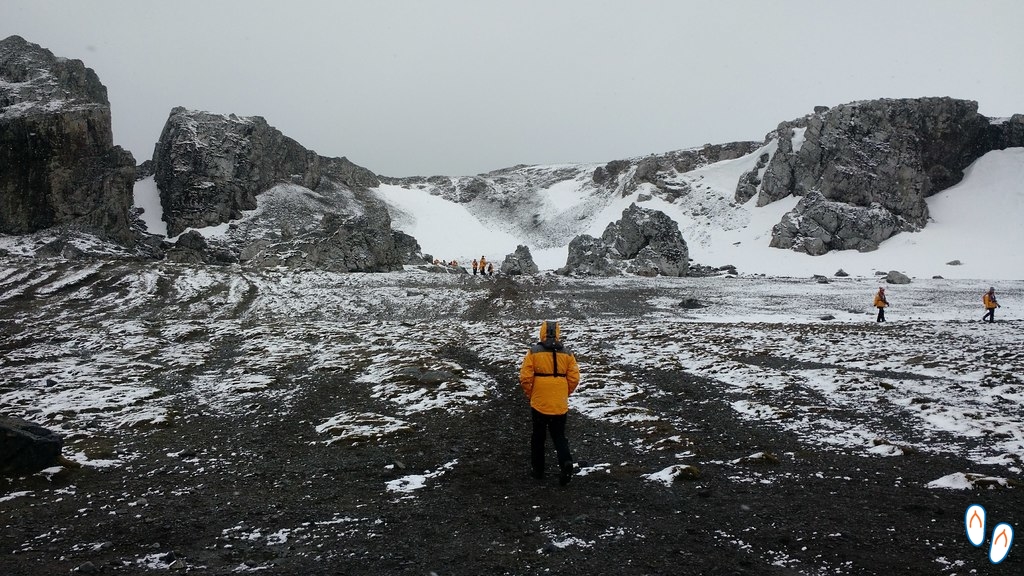 Elephant Point, in the Shetland Islands, Antarctica
Elephant Point, in the Shetland Islands, Antarctica
This first landing of the day was on Elephant Point, a small peninsula rarely visited by Antarctic expeditions. One of its main attractions is the abundant Antarctic wildlife, including 2 species of penguin, giant petrels, sea elephants, and even leopard seals.
Elephant Point is also a place where, depending on the conditions, you can perform a 3km hike in which you have a beautiful view of the peninsula.
Bailey’s Head – Deception Island
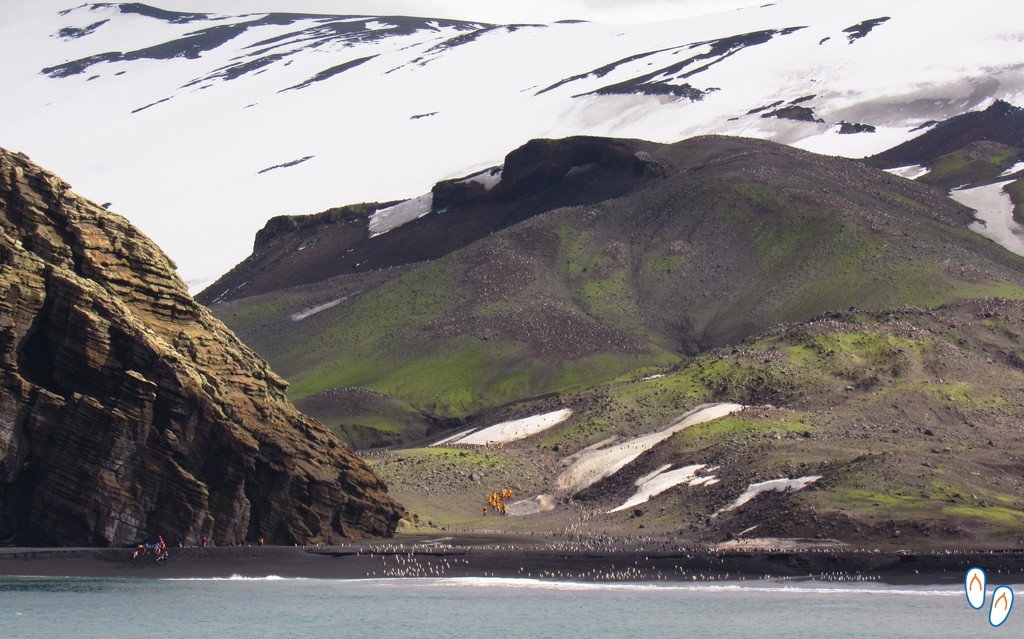 The beautiful slope of Bailey’s Head, Deception Island, Antarctica
The beautiful slope of Bailey’s Head, Deception Island, Antarctica
After lunch, we made our last landing in Antarctica, on the island called Bailey Head. Bailey Head is, in fact, the southeastern tip of Deception Island, which belongs to the South Shetland Islands.
Deception Island is the caldera of an active volcano that collapsed after a strong eruption, destroying important scientific bases in 1967 and 1969.
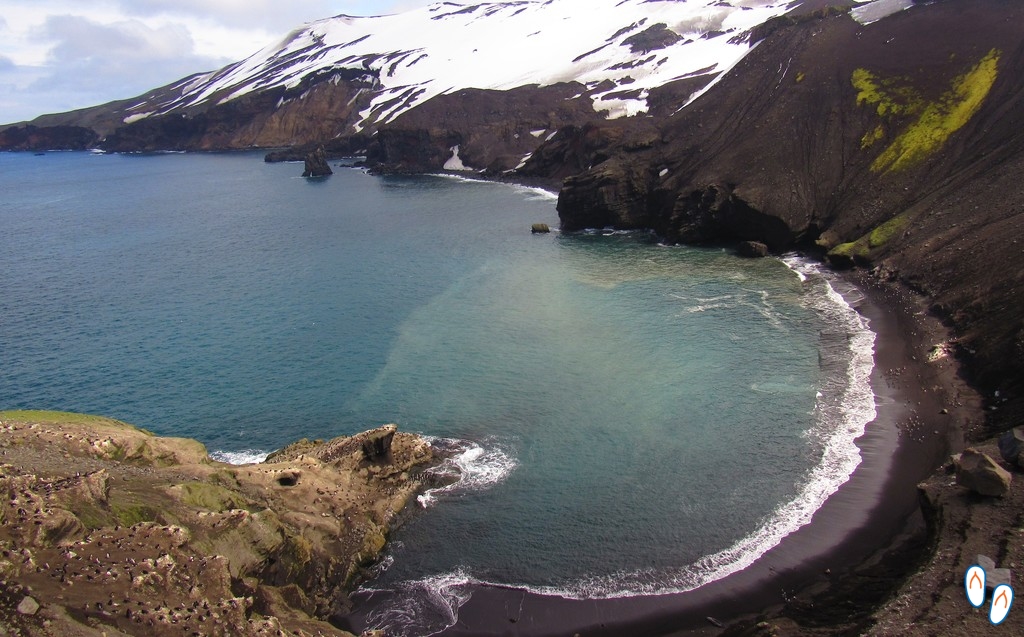 The beautiful Bailey’s Head beach sighted from above
The beautiful Bailey’s Head beach sighted from above
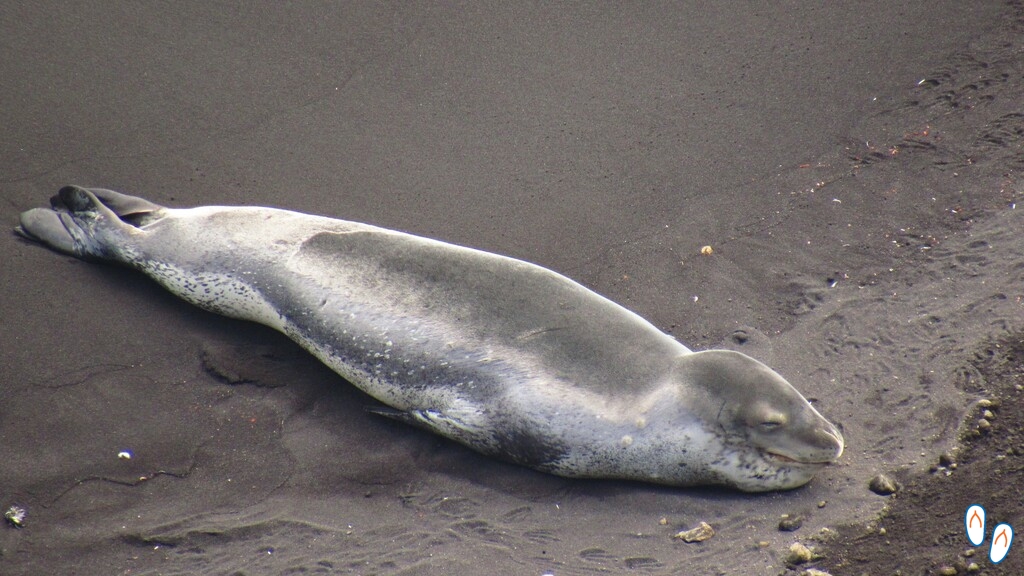 The slender leopard seal, one of the largest predators in Antarctica.
The slender leopard seal, one of the largest predators in Antarctica.
Because of the island’s own shape, Bailey’s Head beach gets more waves than other places we landed. So getting out of the zodiac to the beach without getting soaked was a challenge. But Quark Expedition team made an excellent job as always and everyone was able to land safely.
Because these are volcanic islands, and being further away from the Antarctic peninsula, the Deception Island landscape is completely different from the other places we visit. With less snow and ice on the surface, the dark soil reminded much of places we’ve seen in Iceland – but with one big difference – the island is inhabited by a colony of about 40,000 pairs of chinstrap penguins.
Despite having much less ice and snow, the landscape was so beautiful – and exotic. Penguins were so many that they formed the ‘penguin highways’ as they walked from the nest to the sea and vice versa.
At Bailey’s Head we also had the privilege of seeing the leopard seal for the first time. This seal, the most aggressive of all species living in Antarctica, is carnivorous and feeds on penguins and also on smaller seals.
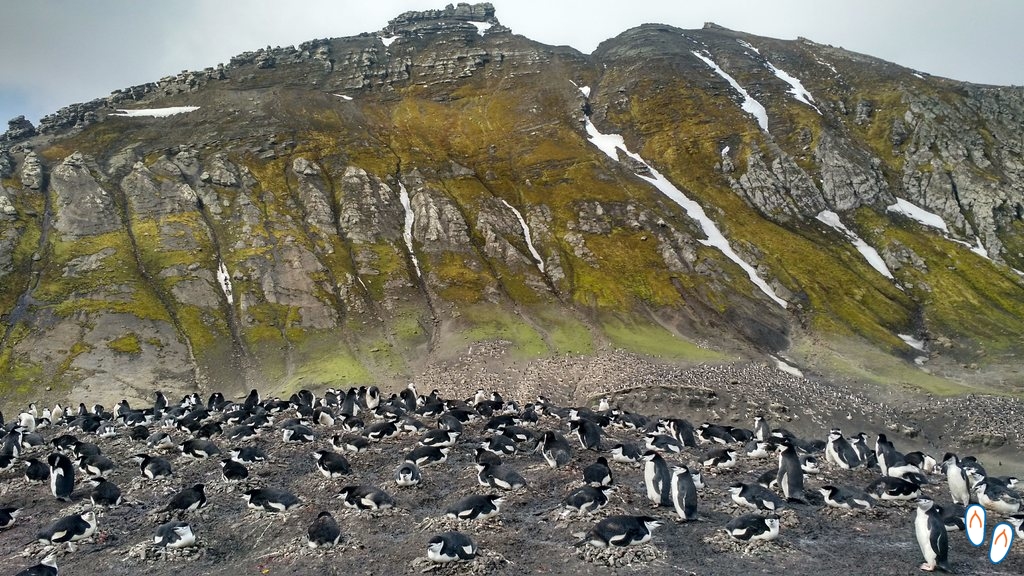 Chinstrap-penguin colonies in Bailey’s Head – all the small black and white dots in the background are penguins!
Chinstrap-penguin colonies in Bailey’s Head – all the small black and white dots in the background are penguins!
Returning to the ship was a difficult task for two reasons – for fear of getting back in the zodiac on a beach with swell and also for considering that we would indeed be bidding farewell to Antarctica. Of course the second motive was much stronger than the first one. But one thing we can not deny: it was the perfect ‘finale’ for our Antarctic expedition!
Upon returning to the ship (and unpacking of boots, lifejackets, parkas, etc.), Ali, the leader of the expedition team, gathered everyone for a toast and a group photo to celebrate the success of our adventure in Antarctica. However, before leaving for the dreaded Drake Passage, she gave us one more gift: she got the captain to enter all the way through the caldera of Deception Island. We were literally inside the volcano! And the landscape … can not even be described in words.
 The beautiful landscape from inside the caldera of Deception Island, Antarctica
The beautiful landscape from inside the caldera of Deception Island, Antarctica
Already at the “entrance” of the Drake Passage, we still passed by some huge icebergs in the middle of the ocean.
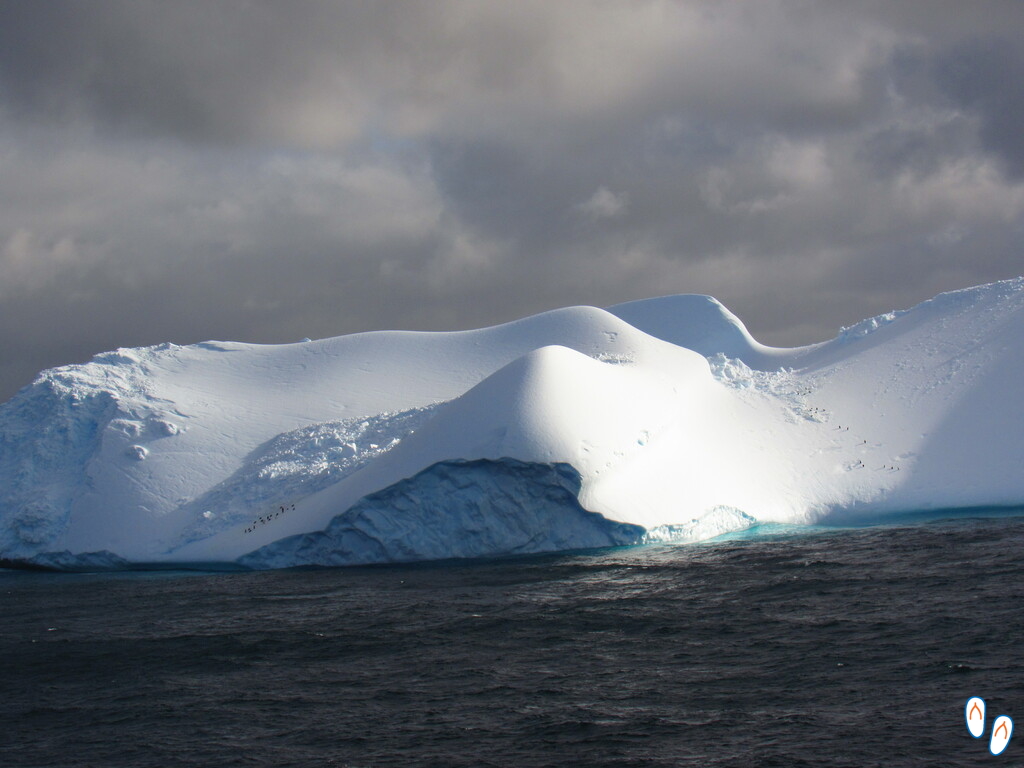 Huge iceberg on the border of the Drake Passage – all dark spots in the picture are penguins !!
Huge iceberg on the border of the Drake Passage – all dark spots in the picture are penguins !!
The evening ended with dinner and a confraternization with a quiz . However, many have failed to participate. It was the beginning of the “Drake effect”.
8th and 9th days – The Drake Passage
The 2 days of navigation towards Ushuaia were filled with a programming of talks, get-togethers and gastronomic activities. These were the distractions for those who were able to leave the room. But unlike the navigation of the first days of the trip, now the waves were higher and the discomfort attacked many of us, even those taking medicine for sea sickness.
For those who did not felt sick, like me, riding the ship without falling or knocking anything at times was a challenge. Despite the amusing sense of feeling as if I were inside the movie ‘Inception’, the ship’s inclination was distressing and I often prayed it would not turn.
The waves reached 10-11 meters high, and the sensation of free falling after a higher wave was also frequent. For security, the outer spaces were blocked. We could now only see the sea through the windows.
Fortunately, around 3 pm on the 9th day, we approached Cape Horn, and the coast of the American continent provided protection against the strongest winds. The ship’s balance declined significantly and people became sociable again. Part of the outdoor area was cleared and we could see the South America from afar.
We had a new briefing for landing instructions, followed by a charity auction to raise money for the NGO Penguin Watch, an organization that does an important job of monitoring and protecting Antarctic penguins. On that same day, Ali led an important lecture on conservationism, encouraging everyone to reflect deeply on our habits and what we can and cannot do to lessen the impact of our activities on the planet.
At 6:00 p.m., there was a session for conclusion and for expressing gratitude for all that went well during the trip. It was followed by a cocktail with the captain. The programming of the day was completed with dinner and a photo session.
10th day – The comeback
We anchored in Ushuaia around 7:30 in the morning. Breakfast was served at 7am. Shortly before that, Quark expedition tem released our passports for pick up at the front desk. On our way out to the cafe, we left our properly labeled bags in front of our rooms.
Quark offered 2 options to passengers: to go straight to the airport, or stay in Ushuaia. In the second option, Quark would be responsible for taking the suitcases to a storage location (but they do not cover the cost of storage). Since we had already been in Ushuaia before boarding, we chose to go straight to the airport.
Final considerations
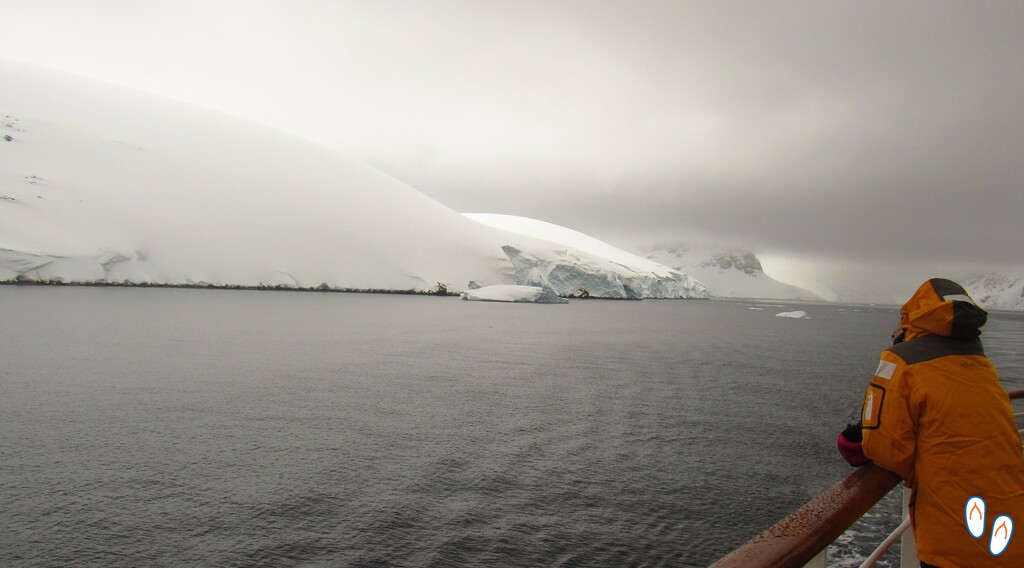 Leith Cove, in Paradise Harbour, Antarctica
Leith Cove, in Paradise Harbour, Antarctica
With the end of our Antarctic adventure, I can only say that I am very grateful that we had the opportunity to make this trip. For some time, I have had the dream to see the 7th continent but honestly I thought it was a dream farther away than it really was.
Although not a traditional travel destination (as it really shouldn’t be), I can not imagine anyone who wouldn’t be fascinated and heart felt by the magnitude of the colossal Antarctic landscapes.
So, if you feel like going, if it’s within your budget, just plan yourself and go! The experience is incredible.
Was I afraid? Many times.
I was afraid that something would happen to the ship. I was afraid of falling into the almost frozen water. I was afraid of feeling sick during the trip.
But my greatest fear, no doubt, was to forget. Forget the feeling that we are very small. The feeling that we are not the owners of this planet, but mere passengers. And also the perception of how arrogant we are to think we control the world. During all my stay in Antarctica, those feelings were very present. My biggest fear was to go home and forget about it.



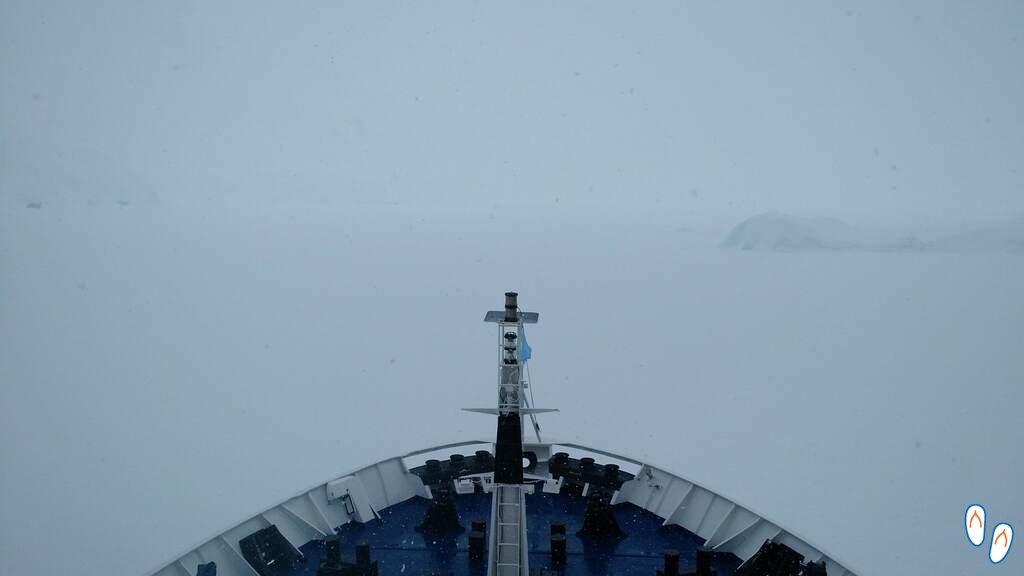

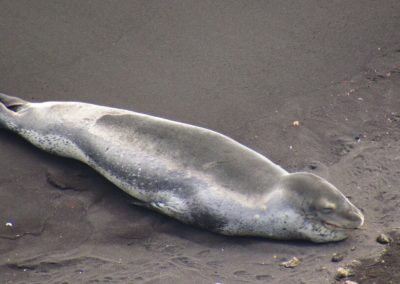
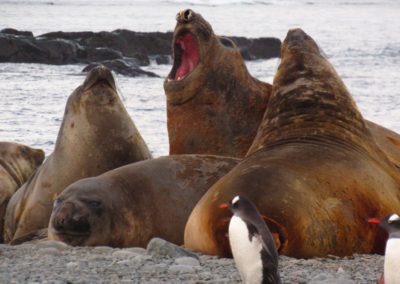
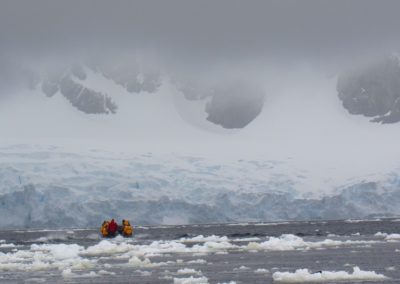
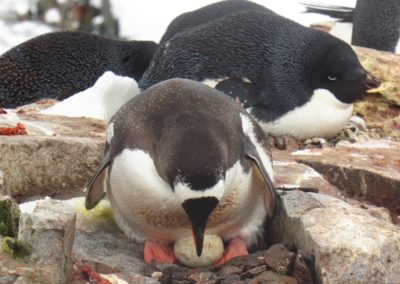
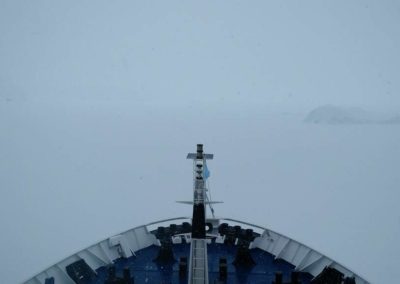
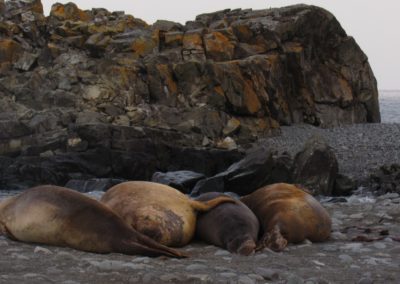
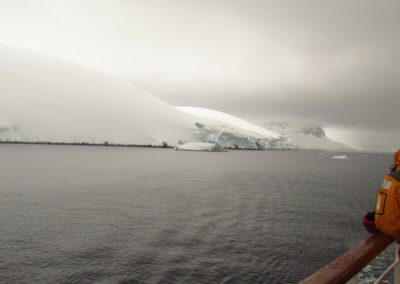

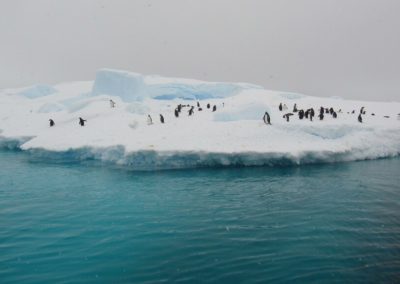

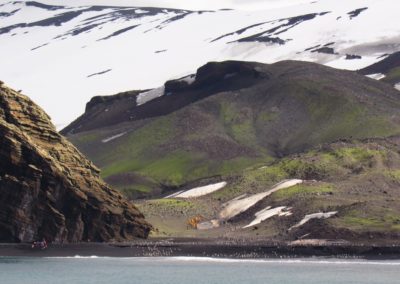
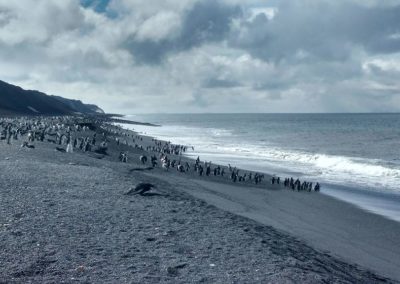
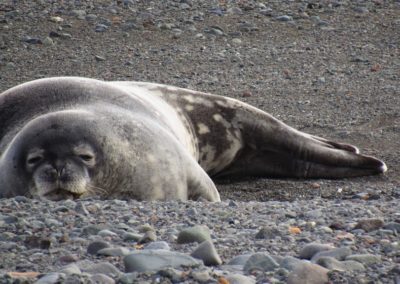
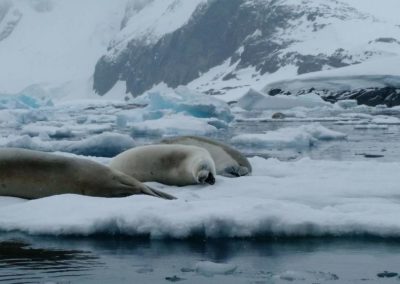
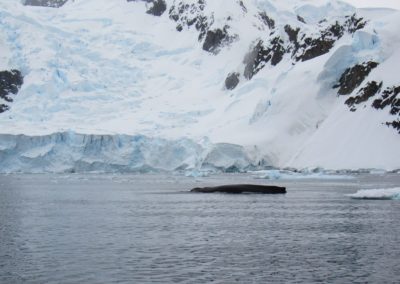
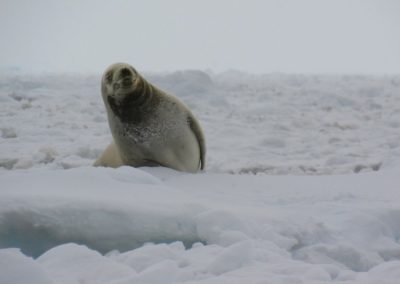
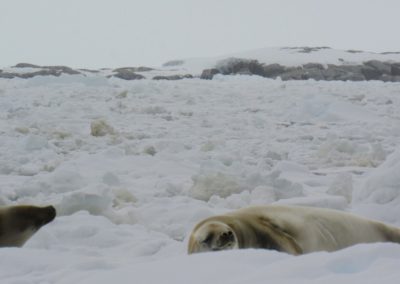

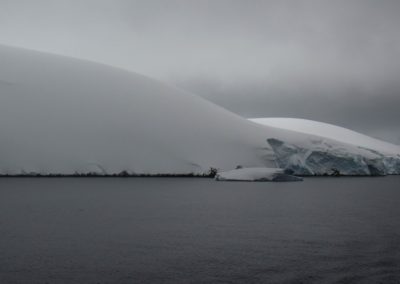


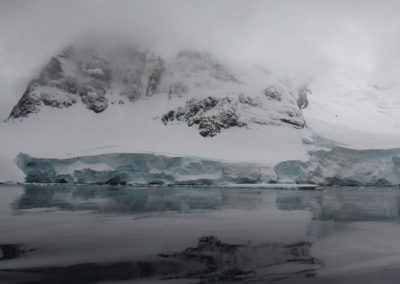
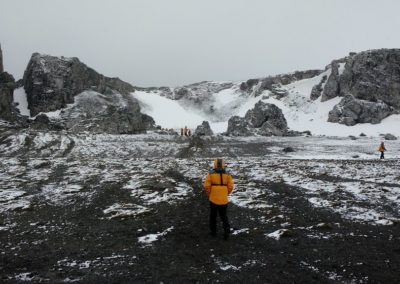

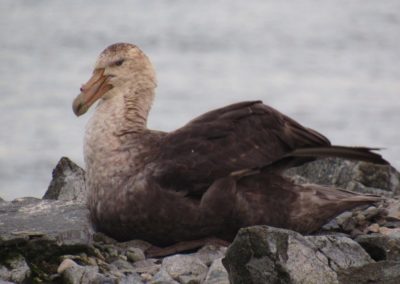
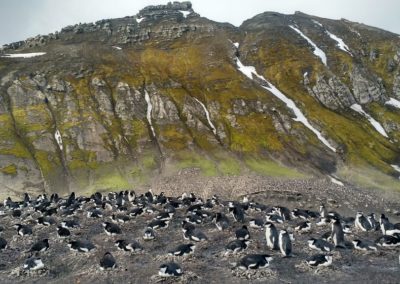
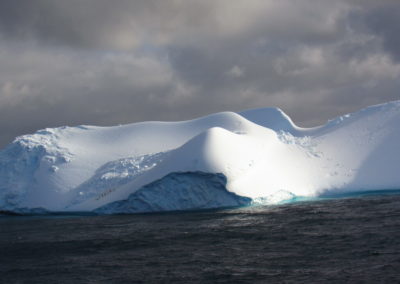

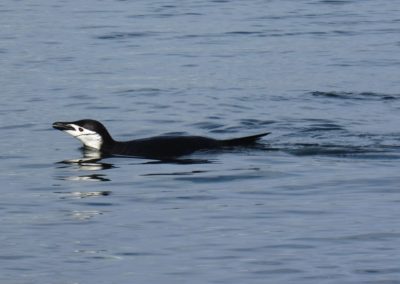
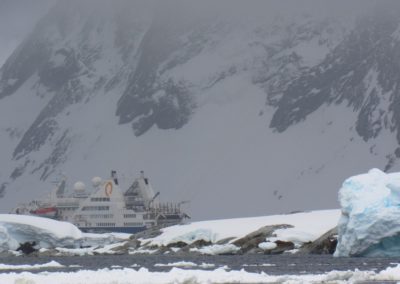
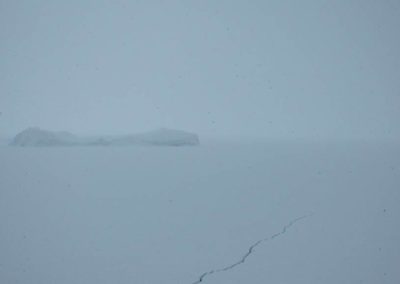
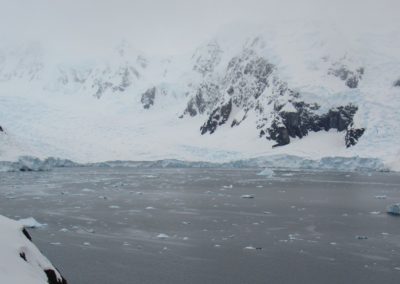
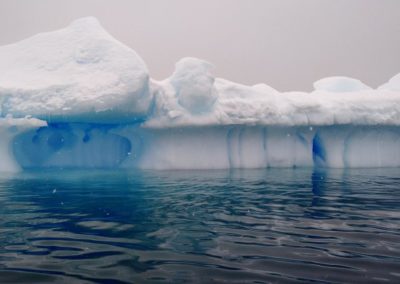
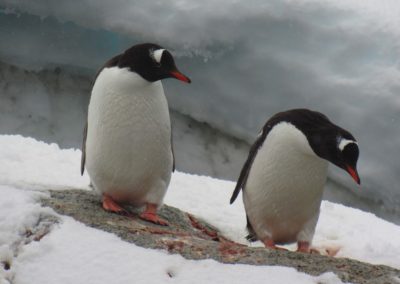
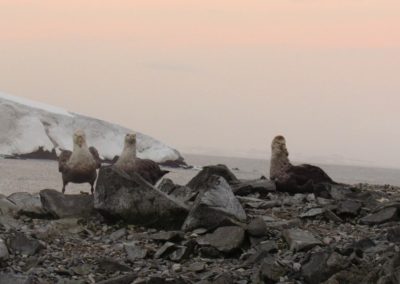
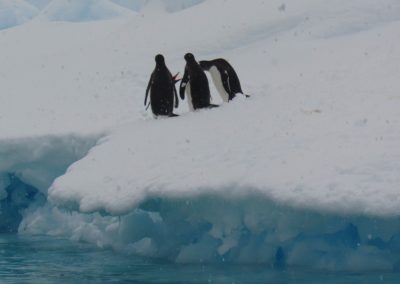
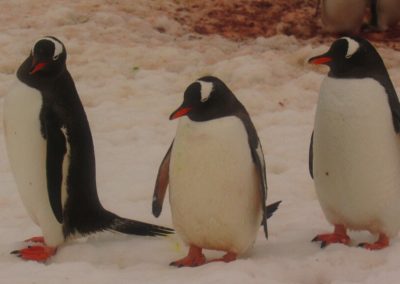
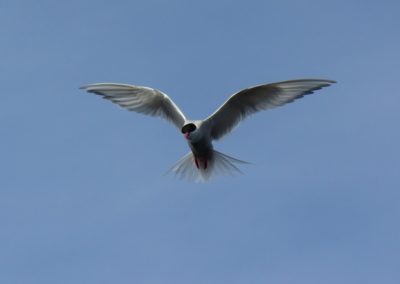
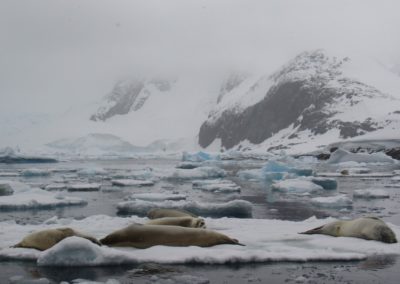
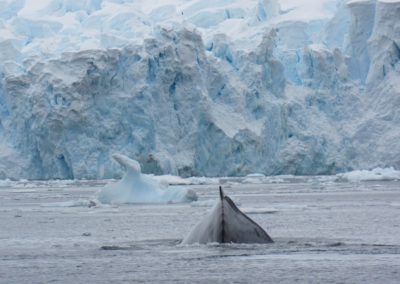
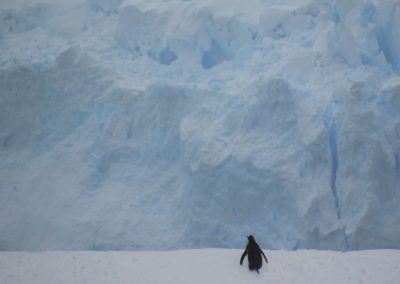
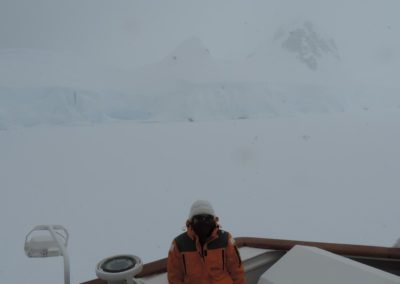
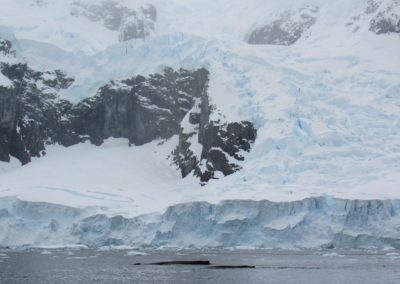

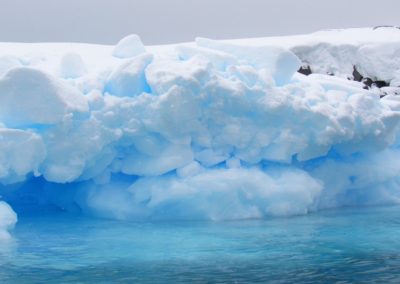
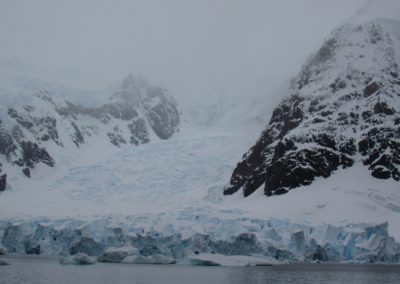
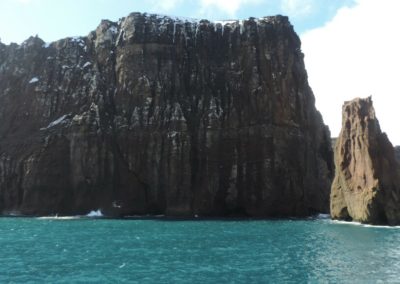
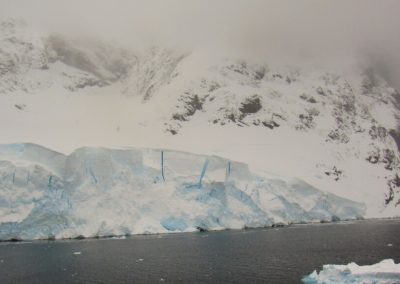
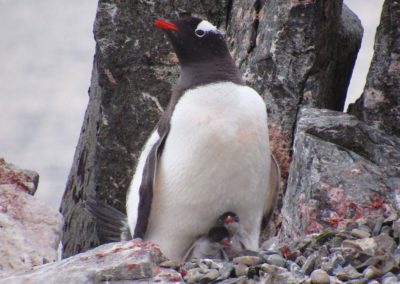
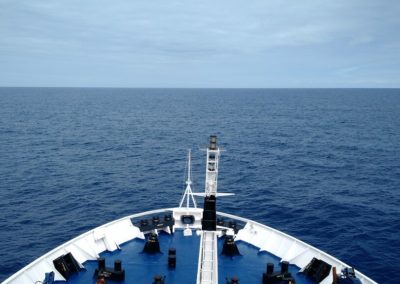
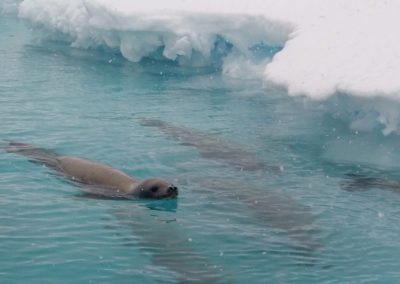
0 comentários